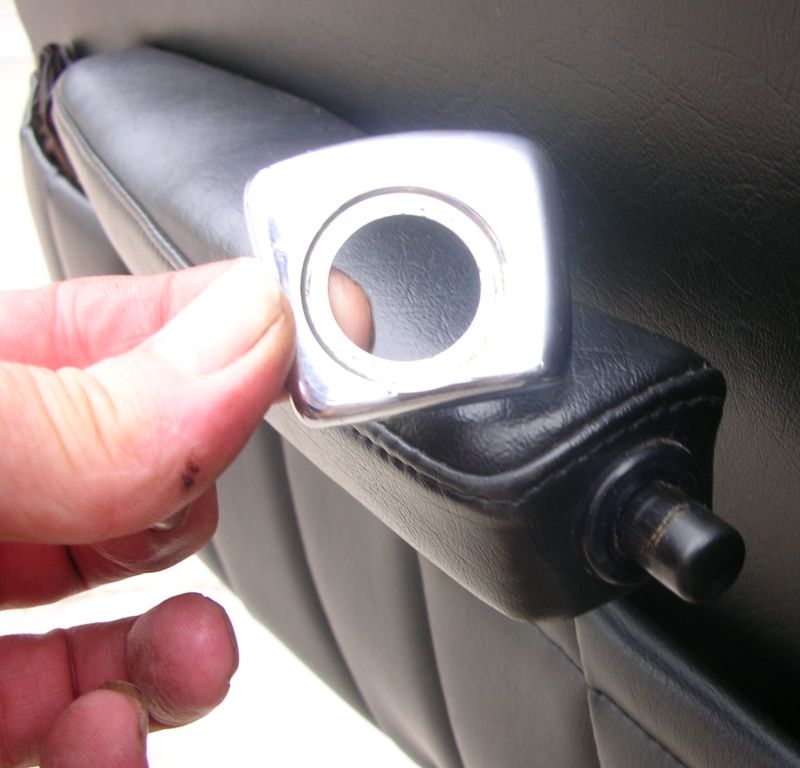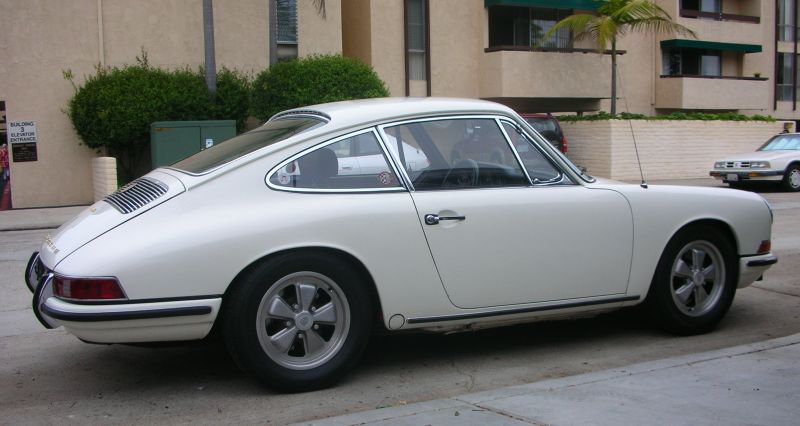
Here is the story on my 1967 911S, which I sold to an enthusiast in Holland in 2007. First some exterior pics:

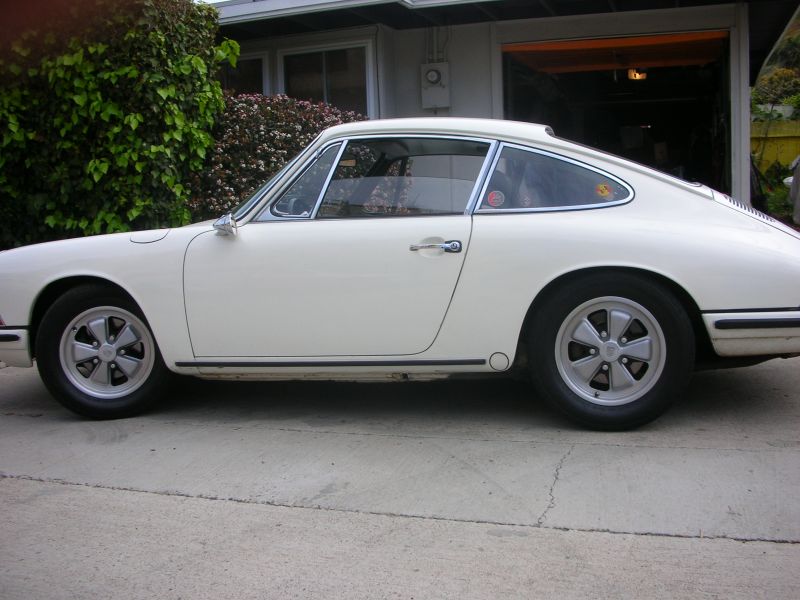
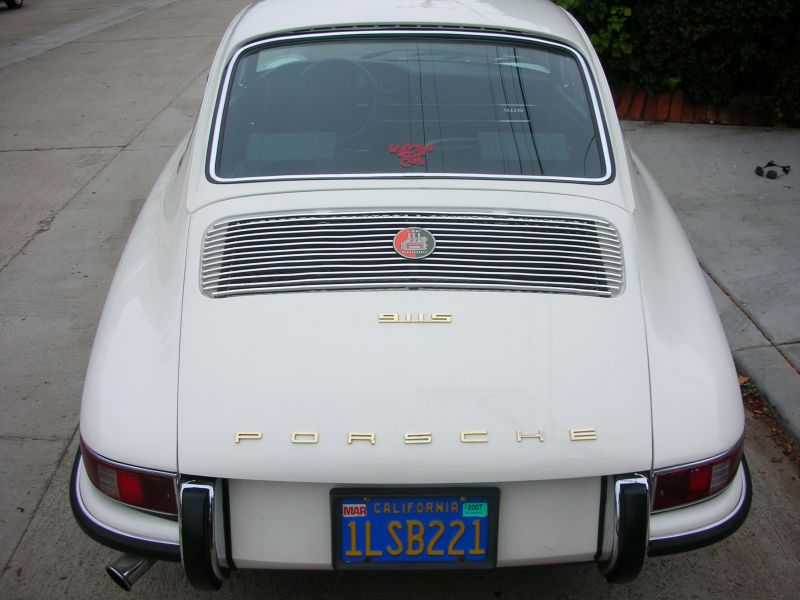
The R Gruppe badge shown on the grille here has since moved to my '73 911E hotrod, and I have replaced it with an elegant, original 1968 German rally badge, in polished brass and enamel, which I obtained from a German collector.
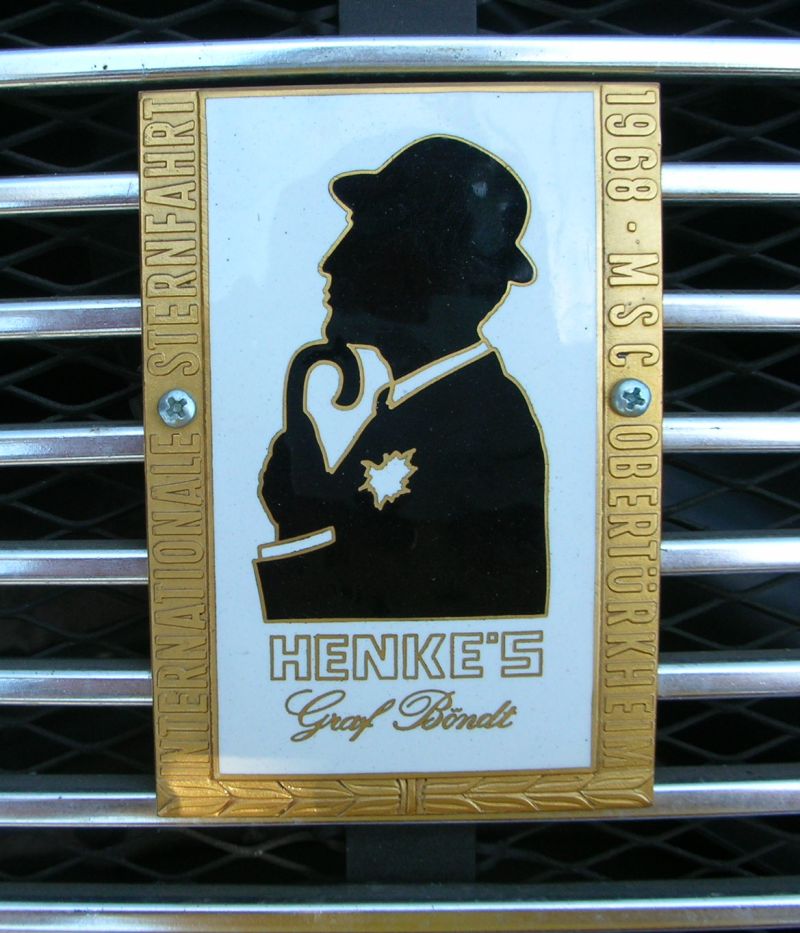
I have also installed a set of stainless steel windshield wipers from Italy since these exterior pics were taken, to replace the incorrect black set shown on the car in the pic below. The original wipers were silver on this year car, and the SS ones look much closer to original and will weather much better.
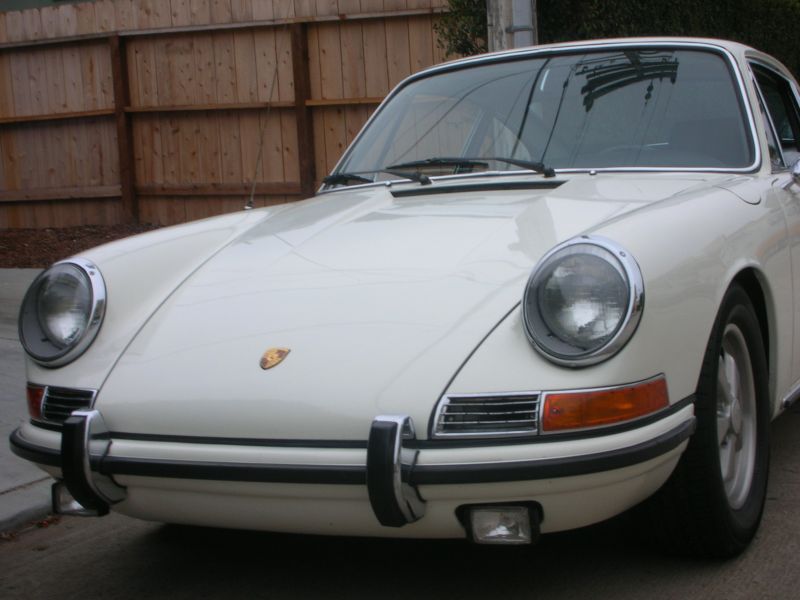
Here is a recent pic of the new SS wipers
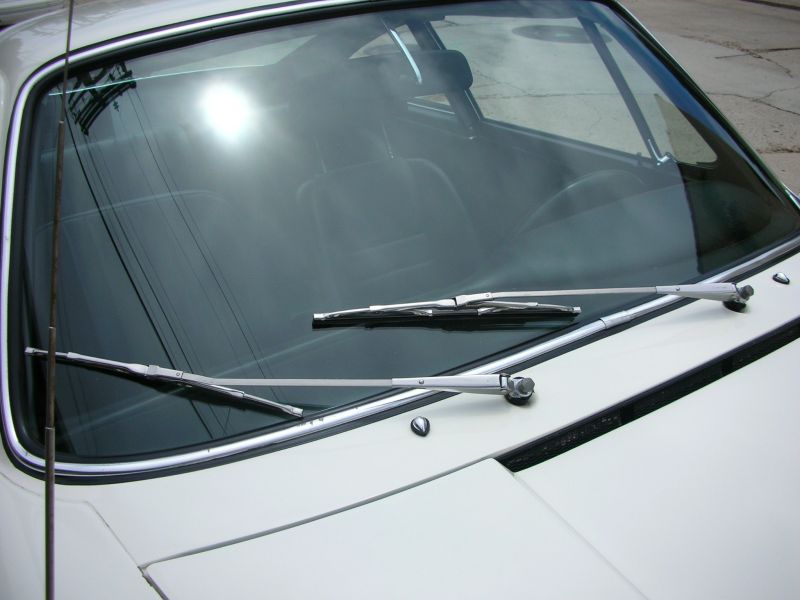
Since these pics were taken, I have also replaced the non-stock foglamps shown with new Hella 128 units, which were original to this model.
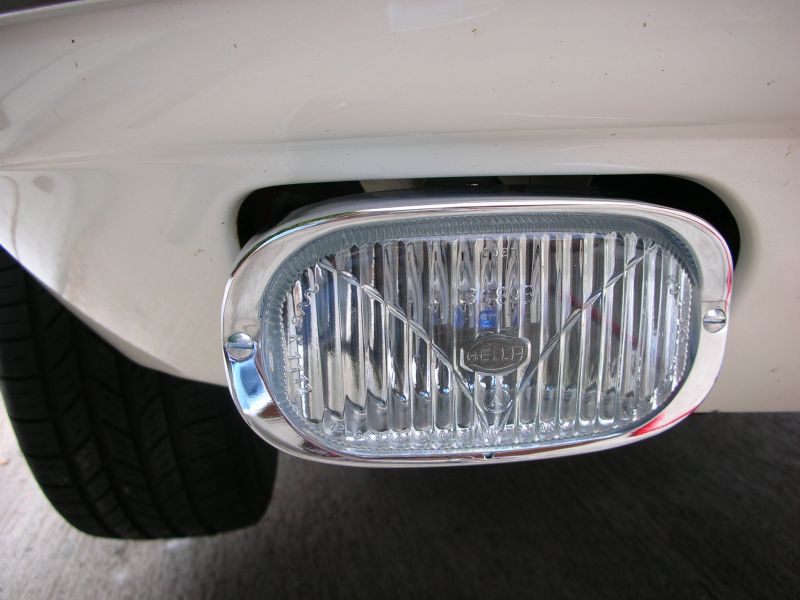
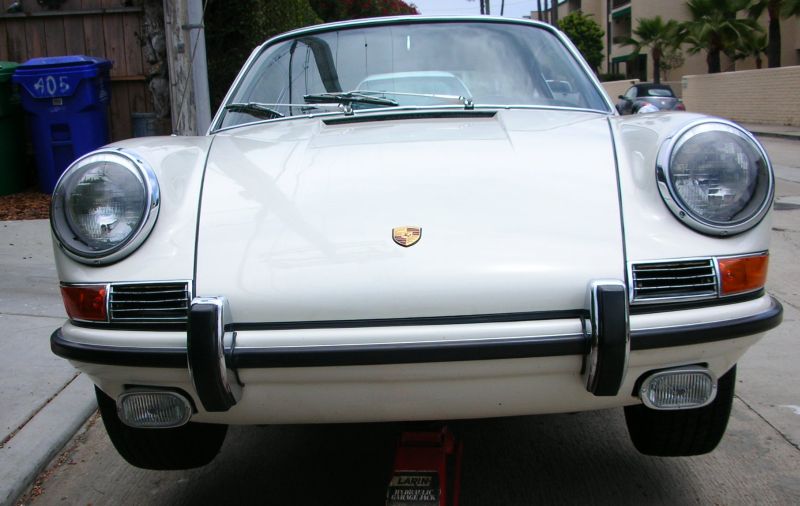
My father, George, purchased the car originally from Bob Brown Motors here in Lakeside, CA, in 1967, trading in his 1965 356SC coupe and paying cash for the balance. It was the first new car he had ever bought, preferring always to buy used models to avoid the depreciation, but when the 911S model came out, after test driving it, he had to have it, saying "Finally, they have enough power!"
It is a Light Ivory (6604) non-sunroof coupe, with Black Leatherette interior. The engine number is 960841 (one of the later production 901/02 engines with the IDS carbs.) Transmission number is 103836-901/02. The only options showing on the COA are the Auxiliary (Webasto) Heater and Tinted Glass. The drivetrain is all original, per the Cardex, and the chassis tags and engine and transaxle stampings shown below. I have the original owner's manual and service booklet issued by the dealer with his name in it.
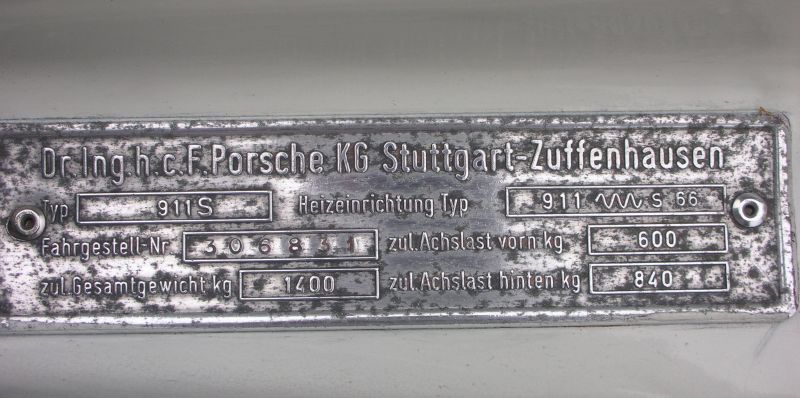
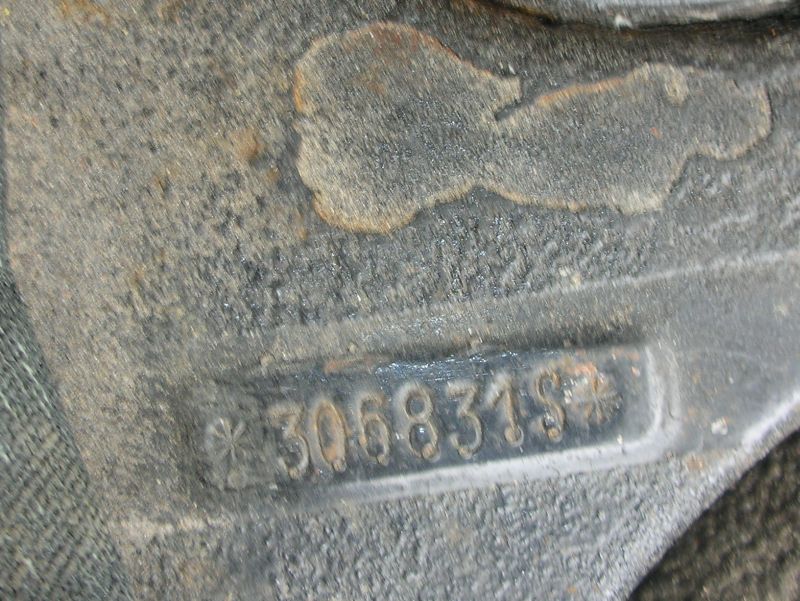
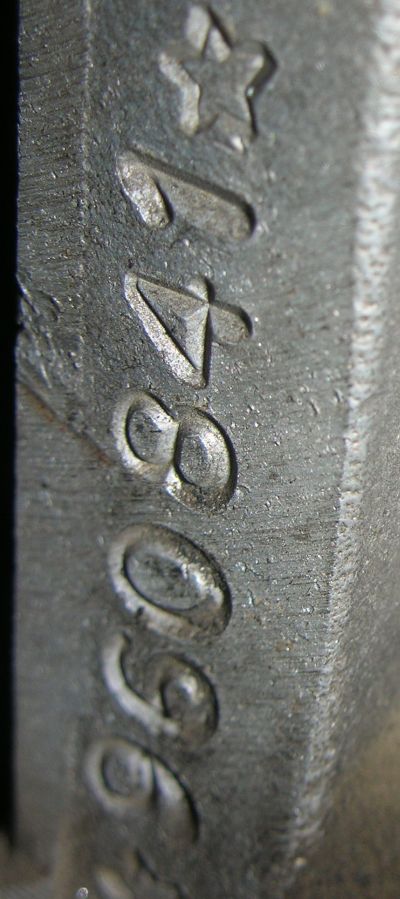
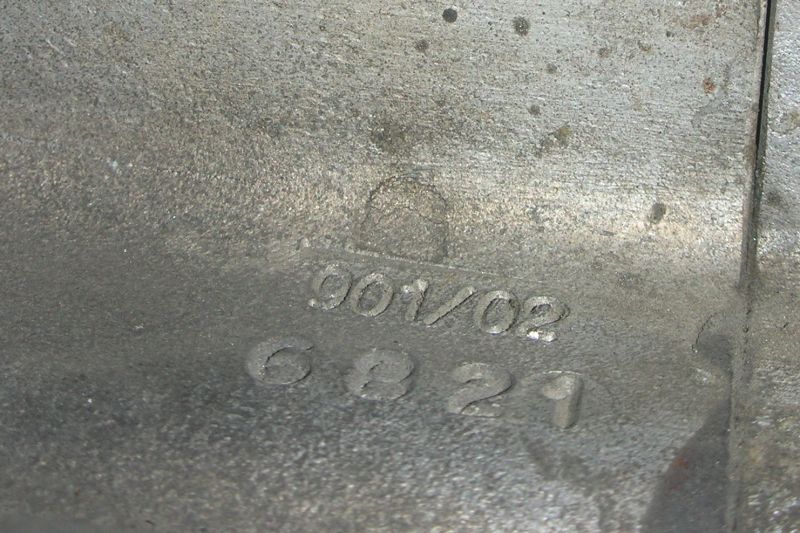
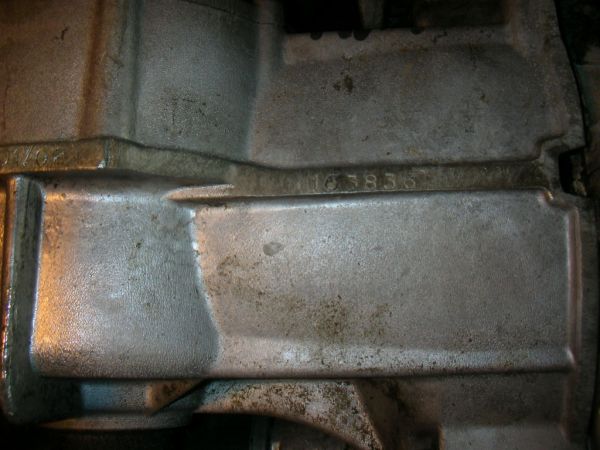
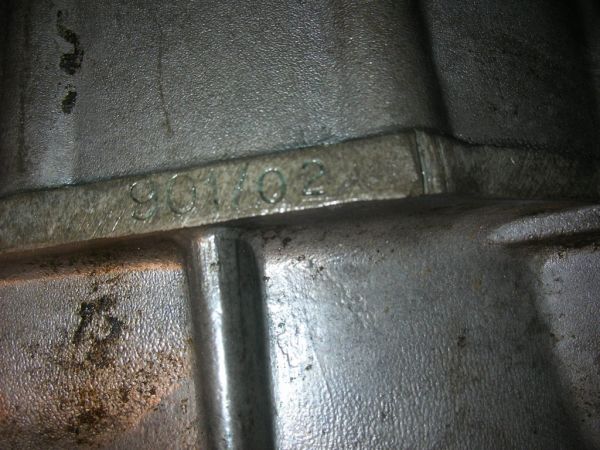
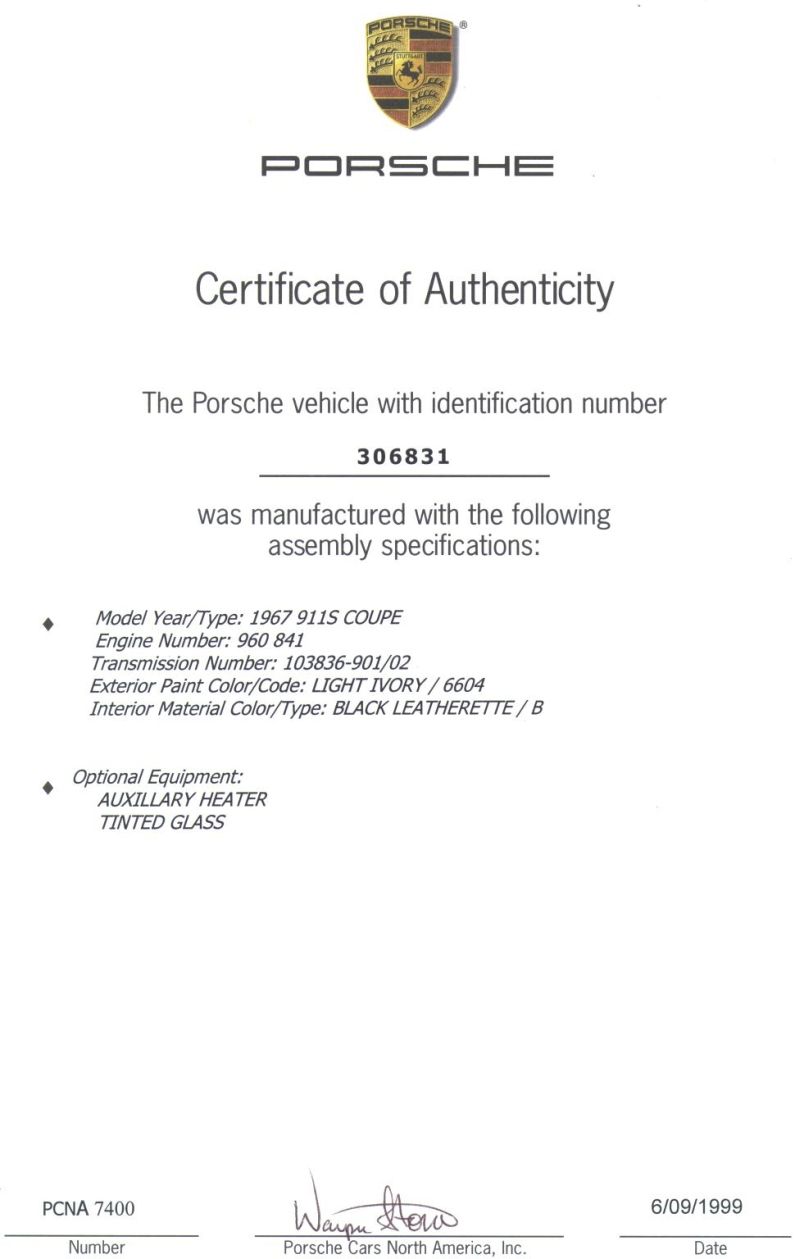
It was his daily driver for almost 20 years, when he finally opted for a 928 with automatic transmission, after he felt he was getting too old to shift gears constantly. He put over 180,000 miles on it, and I borrowed it whenever I could talk him out of the keys, as a teenager, while I was still living at home, and even when I came back on visits from college. At one point in the '70s, it was involved in a minor rear-ender, having stopped for a traffic light faster than the car behind it could brake. It was a 5-10 MPH collision, so there was only minor damage to the license plate panel and the engine lid, but my stepmother talked him into having it resprayed in Polo Red when it was being repaired. They also replaced the engine lid with a later model one instead of repairing the original at that time.
My father did all his own maintenance on the car after the break-in period, since he was a mechanic in his youth, putting himself through college by running a gas station and service shop, but after 150,000 miles or so, he decided the engine was leaking a little too much oil, and his career as an engineer was too time-consuming, so he took it down to Dieter Vongehr (http://www.dietersmotorsports.com/history.html) who was working with Dennis Sherman in a shop in La Mesa at the time. They disassembled the engine and found the pistons and cylinders still in perfect shape, and overhauled it with new rings, bearings and valves, resealed it and put it back in the car. It has been running strongly ever since, zipping up to the 7300 RPM redline on a regular basis, and has only a few minor oil leaks which might drip a 50-cent-piece size spot on the garage floor when it sits for a few days. The odometer now has 35,xxx miles on it, having turned over the 100K mark twice, so the engine has about 85K on the rebuild, and showed even compression in all cylinders on the last test. I still have the receipt for the engine rebuild.
At one point, the exhaust emission rules were changed in California to be so stringent that the '67S could not pass the smog tests, and it was registered as "non-operational" for a time. When the rules were relaxed for older models, it was re-registered, but the DMV insisted that it be issued the newer "blue" CA plates, and the original black plates were surrendered. I have obtained a pair of period black plates to put back on the car when the new legislation to allow them on collector cars is passed (AB462, currently in process.)
Even though I had always told my father I wanted the car, in the late '80s, when my father bought his first 928, my brother, Doug, who was running a tug boat company in the SF Bay area with my father at the time, beat me to the punch, by virtue of living closer to him, and snaked me on the deal. He bought the car from my father and drove it for several years, then decided to do a "preservation" sort of restoration on the car, and had the body taken down to bare metal and returned to it's original light ivory color. He had the front pan replaced due to the usual battery acid damage, and all the chrome, rubber and glass renewed, the transmission rebuilt (I have this receipt as well), and the interior redone. There were also minor rust repairs done to the right side rocker, around the jack point, and the lower corners of the rear window, which are known trouble spots on the early cars. At one point, while he was living in Oakland, the radio and steering wheel had been stolen, so he replaced the steering wheel with an aftermarket Dino and the radio with a modern (at the time) JVC AM/FM tuner and tape player with speakers mounted on the shelf under the rear window, and had an aftermarket alarm system installed. I have collected a restored '67 wood steering wheel, which could have been an option on the car when new, and a period Blaupunkt radio and 6V/12V transformer (in unknown condition) to return the car to a more original look at some point in the future, but have not installed them. They are included with the car.
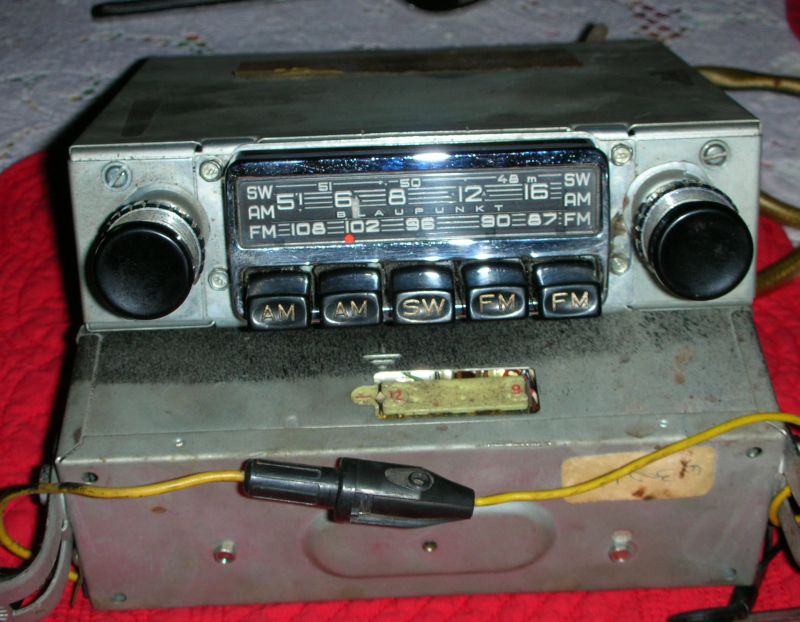
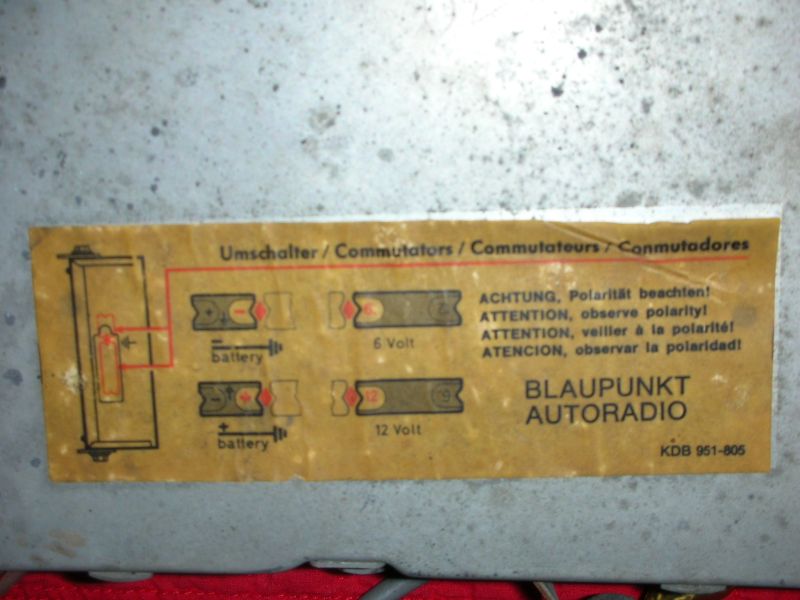
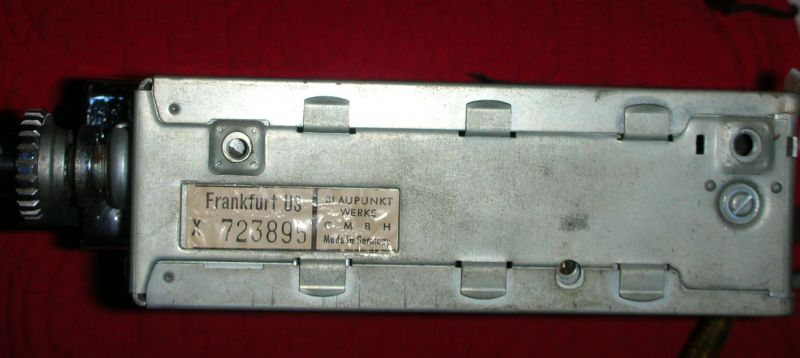
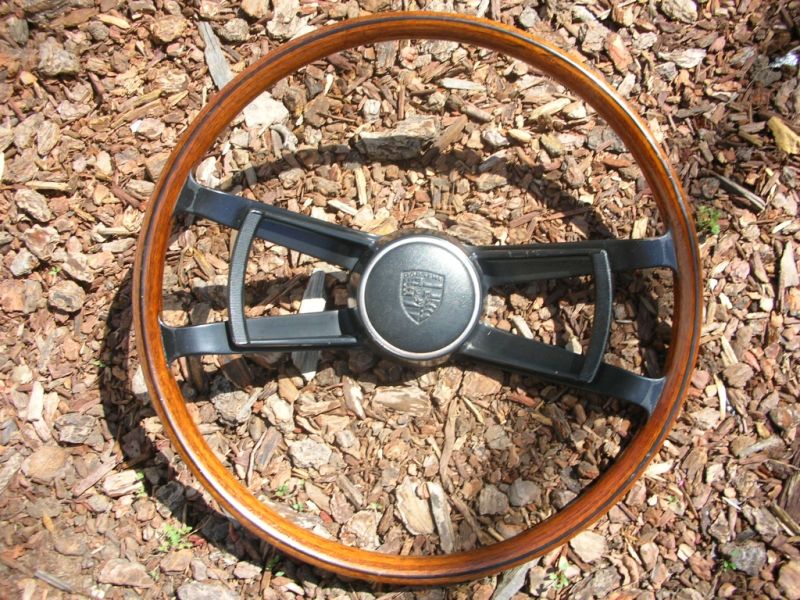
My brother didn't drive it much after that, and it spent most of its time in the garage. In the late '90s, he finally called me and said that his wife needed a new horse trailer, and the 911 had to go, so I could have it if I wanted it. I went right up to Nevada City, where he had moved after they sold the tugboat company, and bought it, driving it the 500 miles home without a problem. I already owned a '66 911 that was converted to S specs, and a '73 911E hotrod, but I didn't want to this one to leave the family. I'm still not sure if I do, but I am starting to have a little bit of a storage problem as my stable has expanded.
I didn't need two SWB cars, so I sold my '66 to a fellow in Australia. I had been developing the '73E as a track car, and continue to work on it, taking it towards an RS-look, with even more power and braking and stiffer suspension than the original RS. My intention was to keep the '67S for street use and mostly stock, but my pleasure in these cars derives from driving them, not showing them. As I had joined the Early S Registry and PCA when I first bought my '66, I am aware of the concours crowd and the obsessive/compulsive "period correct" fanatics, but I have never belonged to that camp. However, I am also aware of the significant historical value of this model car, and have taken pains to not do too much irreversible damage to the original base while improving its driving performance as much as possible, and retaining and collecting the original parts necessary to restore it authentically if so desired. Since this car has over 200,000 miles on it and has been repainted twice and the interior renewed, it is hardly "original," but it is still largely stock and true to the original design, and has a known history, with almost all the bits for a complete future restoration. It still has the original owner's manual and service books, and the original jack, but the tool kit was long ago dispersed to the winds.
The first thing I did when I got it in 1999 was to put 6" Fuchs on it, as the 4.5" wheels and 165 tires are a performance hit that makes the original design a bit "floaty" at speed. I have a complete set of the original 4.5" Fuchs wheels, but I could never give up the stability of 205 tires on the wider rims now. I have refinished the 6" later Fuchs to look like the 4.5 " ones by polishing and painting them similarly. The 4.5" Fuchs are all in need of refinishing, but are probably worth almost $3000 as is, these days. One of them still has a tire mounted and is being used as a spare in the car. All will be included with the sale.
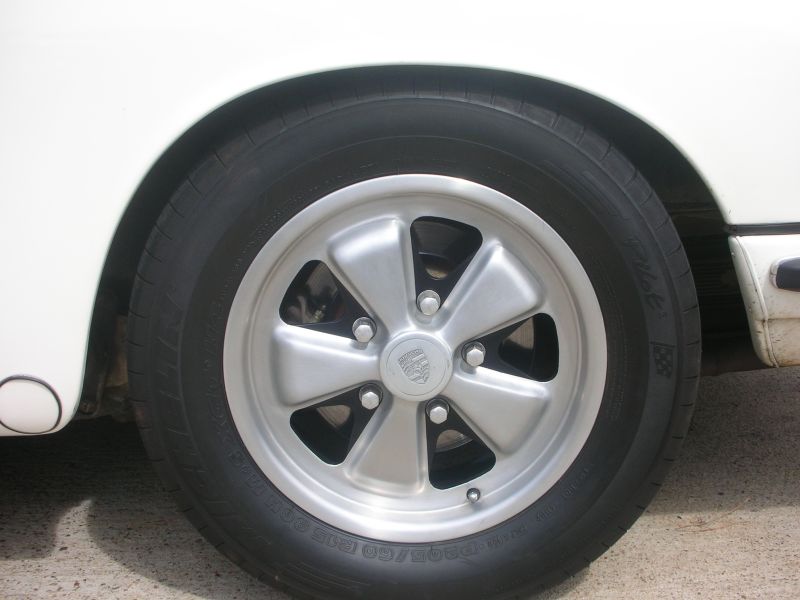
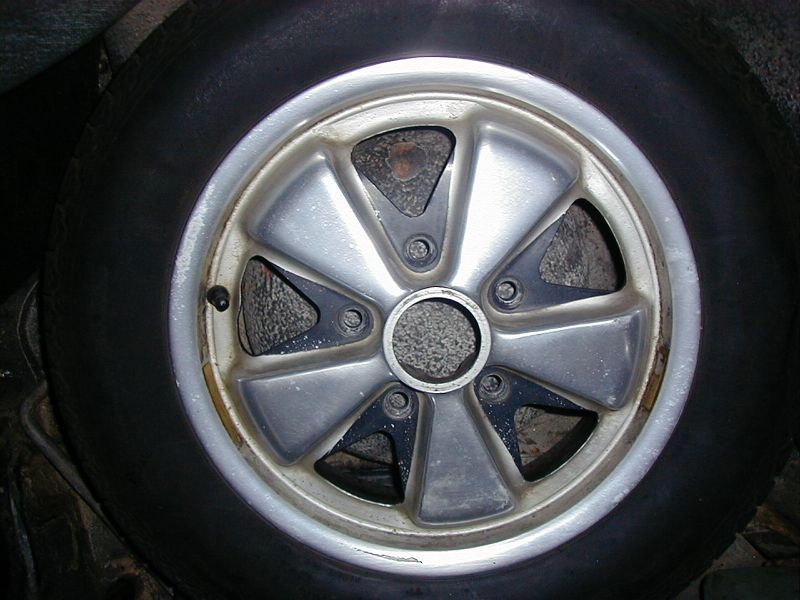
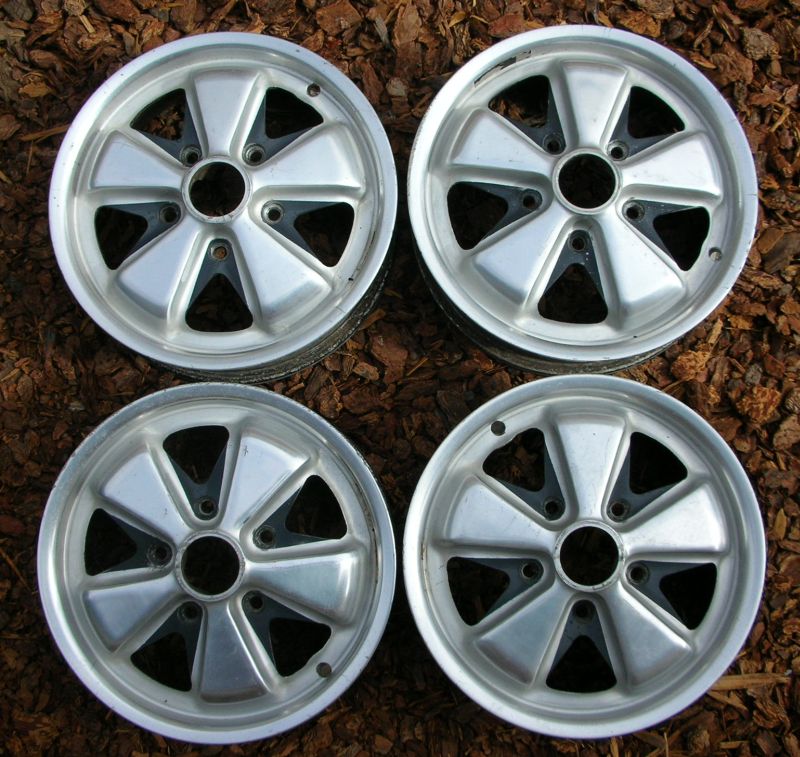
I also have 4 brand new 3-prong, clear-anodized center caps for when these wheels are restored, as well as the special valve stems for them to allow modern tubeless tires to be mounted.
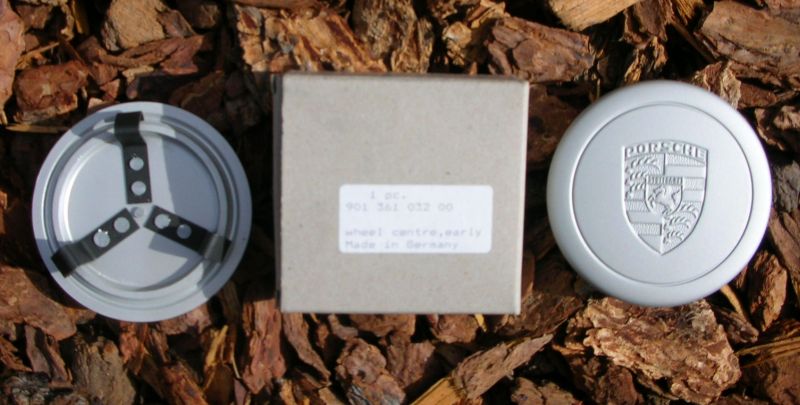
All the fender/lid and door gaps are excellent, and the sheetmetal is very straight.
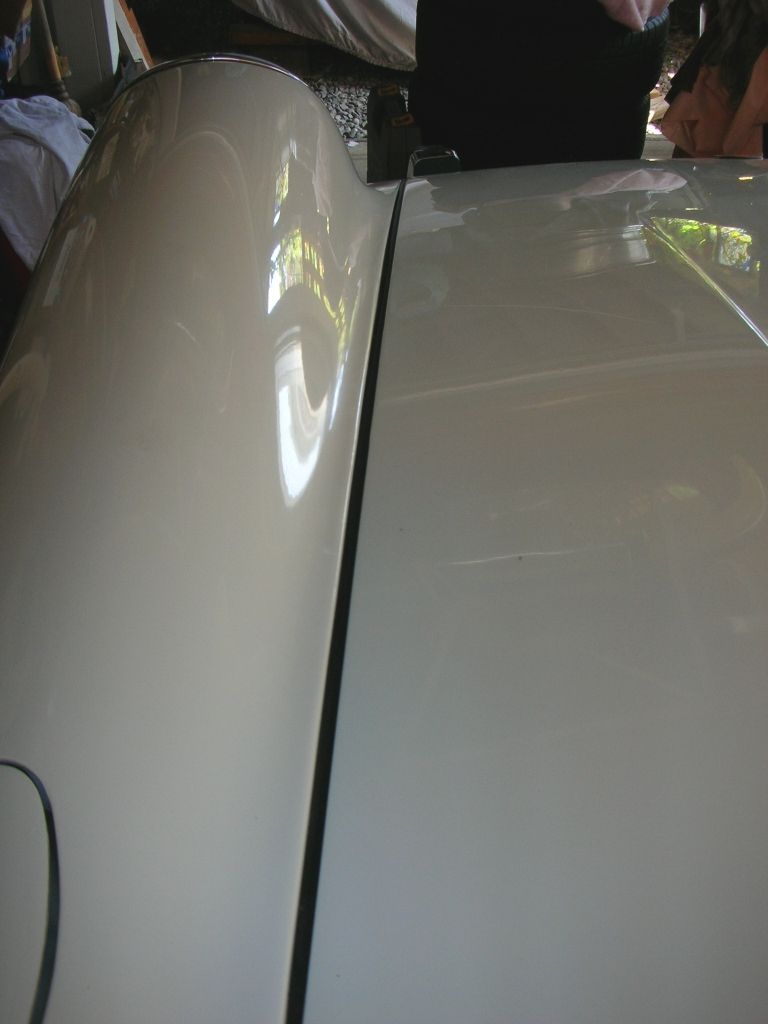
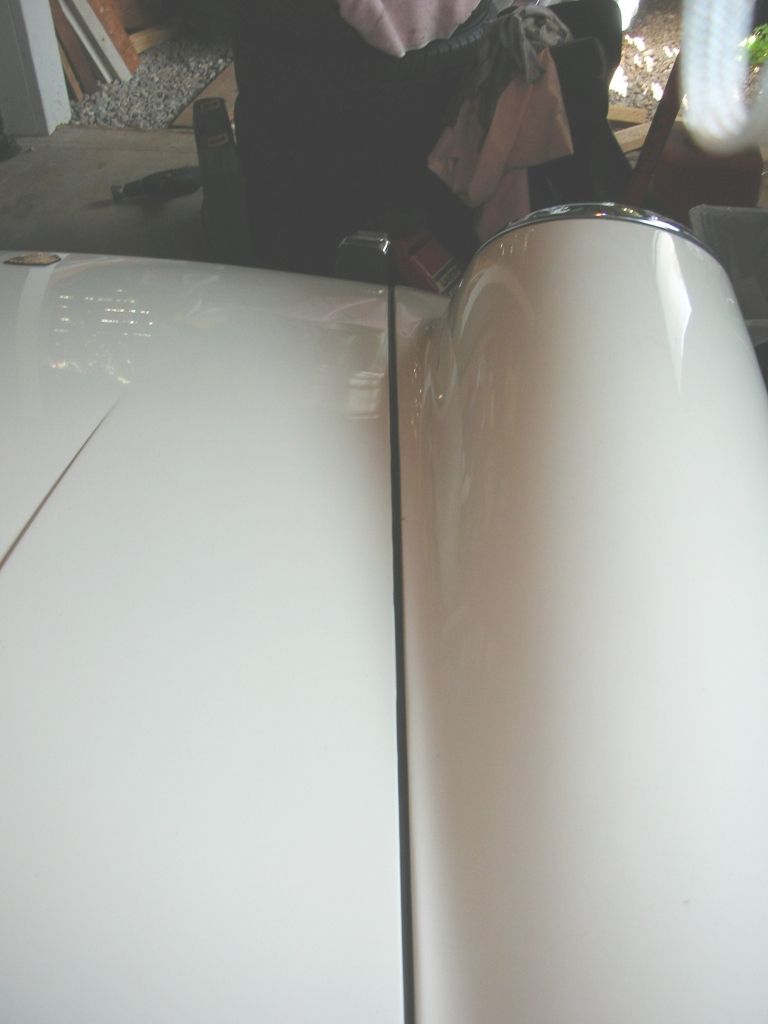
The door bottom drains have never been plugged and the sheetmetal is solid there.
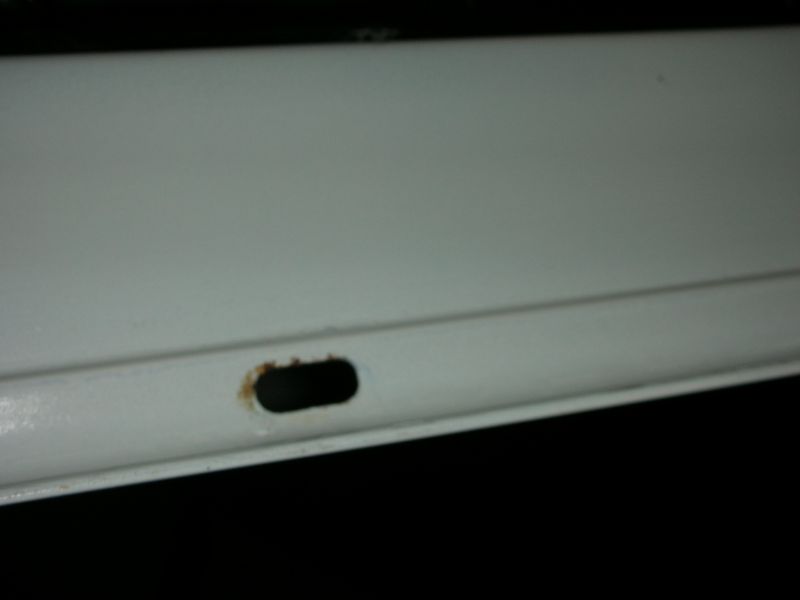
The original interior floor insulation is intact and undamaged, with no signs of cracking or staining:
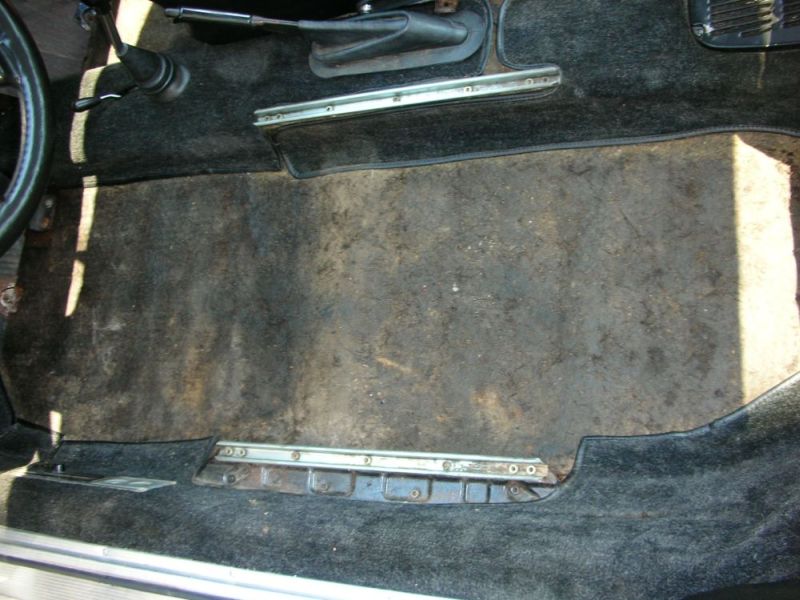
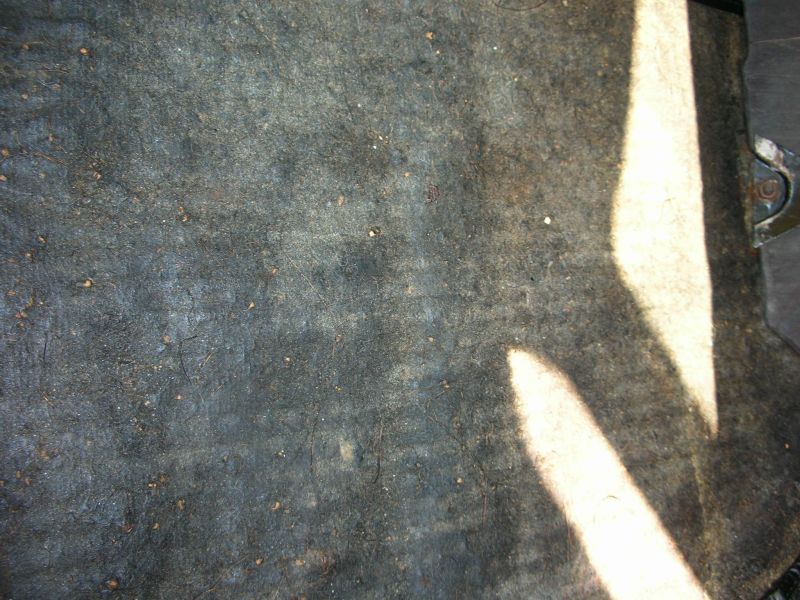
When I first got the car home, I immediately removed the alarm system, as I hate car alarms. I rebuilt all the brake calipers and took off the inner rock shields for better cooling (but retained them in case some future owner wanted them.) The headlight housings had a bit of internal rust, so I bought some NOS units and installed them. I had my mechanic, Steve Grosekemper, the foreman at Dieter's shop, adjust the valves and do a compression test on the engine. All cylinders were within spec. I had him add an electronic ignition, since my Dad had always complained about having to change the plugs so often, as the high compression motor would foul them quickly (every 3000 miles or so.) The MSD 6AL CD box and Crane optical points were the end of those old plug fouling problems. Steve dialed in the carbs, and although there was some throttle shaft wear, they just needed rejetting for the current fuel formulations, with the idle set a little higher for the false air. The engine pulls strongly all the way to redline (which I have limited to 7,200RPM with the MSD "pill") with the usual Weber flat spot around 3500, then taking off like a raped ape at 5000, when it comes on the S cams. The transmission shifts perfectly, and all synchros are solid--it will perform up and downshifts into any gear without grinding.
There was a little sag in the rear driver's side suspension, so we installed Swayaway adjustable spring plates and new torsion bars and bushings (once again, I kept all the original parts.) Turbo tierods were added to the front, and the F & R sway bars were upgraded to newer 18mm factory units, with new bushings. After a corner balance and alignment, the difference in handling was incredible. It was much more stable at speed, and cornered much better.
Although I had never intended to race the car, I began to wonder what it could do, so a couple of years ago, I took it to one of the PCA-SDR driving schools where I instruct, and went out on the autocross course in the last session of the last day, when instructors are allowed to take the students in their own cars. Although it didn't have the power of my '73E, it had a nimbleness that was pretty surprising. I decided to prep it a little further, so I put some 7" wheels with Falken Azenis tires on it (which required rolling the fender lips) and installed a sport seat and harness on the driver's side, since the original seats are a joke as far as lateral support is concerned. I had Steve install new 930 chain tensioners on the engine to prevent valve timing failure. I also took the 50 pounds of cast iron ballast out of the front bumper to lighten it a bit and installed the Club Sport motor mounts to control engine movement. The results were pretty amazing. I ran it in about 20 autocross events over the next two seasons (2004 and 2005) and it dominated its class, winning every event by large time margins, and often beating every other stock Porsche, up to and including the 993 and 996 models on raw time. On indexed time, it beat all the modified cars as well, winning TTOD several times on the BRI. It won the PCA-SDR series championship in G-Street Stock class in 2004 and both PCA-SDR and Zone 8 championship in G-Stock in 2005 (running R-compound Kumho V710s.) The car was so dominant that Zone 8 changed their rules in 2006 to raise it up in class, so I retired it from competition. I have bought a '68 911 recently to build up as a 911R-look, F-Prepared class car instead. My '73E is set up as a big-track car now and really isn't that fun to autox. I have really gotten addicted to the nimbleness and looseness of the SWB cars. Their ability to change direction and rotate easily is astounding, which is a great asset in autox.
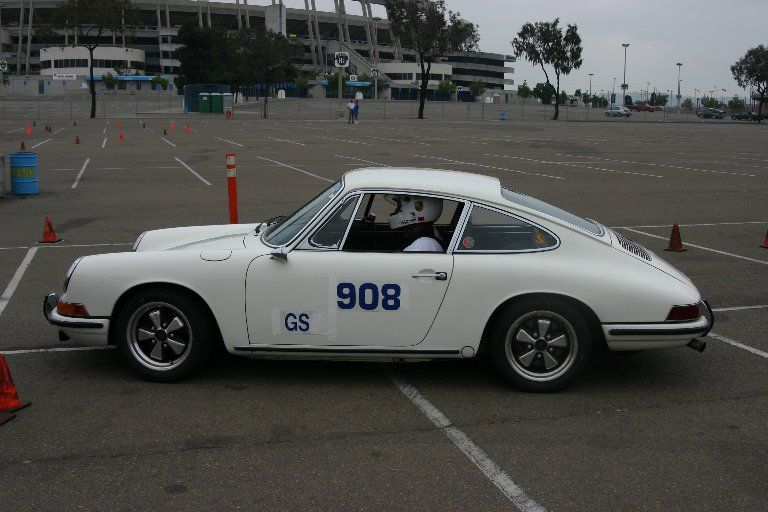
It has been a very reliable car, and I would not hesitate to drive it anywhere, and have. I took it up to the GAF at Ventura for the weekend a few years ago, and to the Ca. Speedway POC Tribute to LeMans event last year, drove some parade laps on the track with the Early S guys at noon, and came back home without missing a beat. It is presentable enough to not be embarrassed at all on a club run, but it is NOT a show car, by any means, compared to some of the detailed, restored cars one sees in the R-Gruppe and Early S Registry. All-in-all, it is a very nice "10-foot" car that drives like a banshee and is very honest and solid. It actually drives better than new in its current configuration.
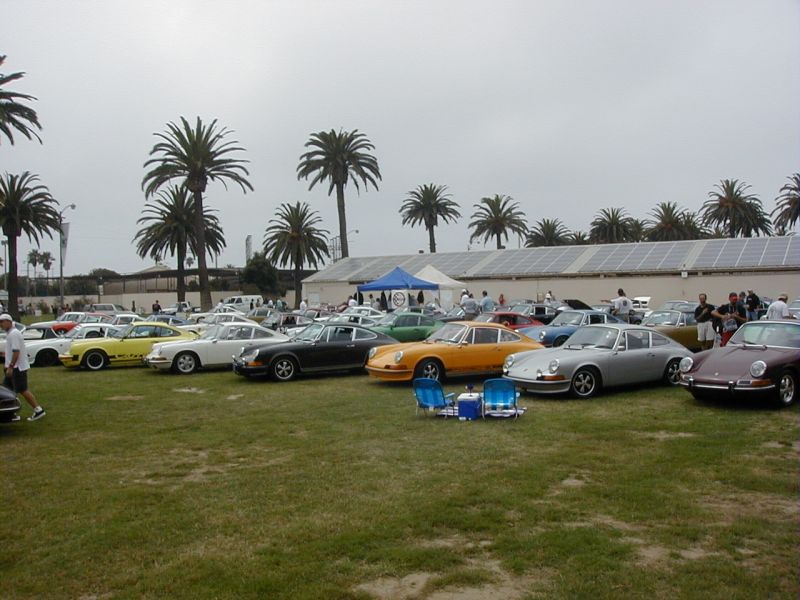
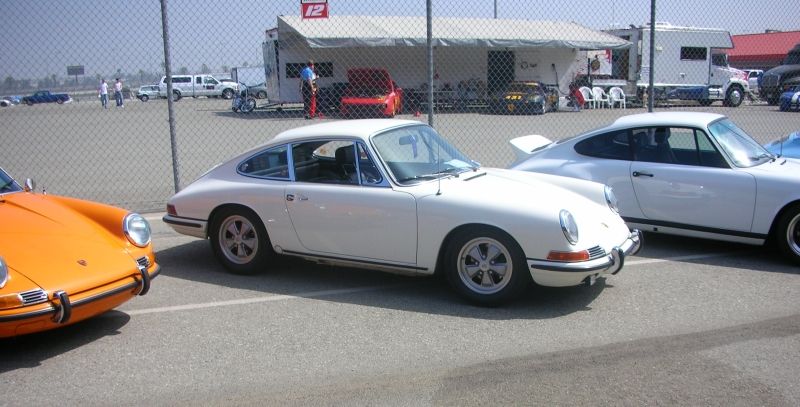
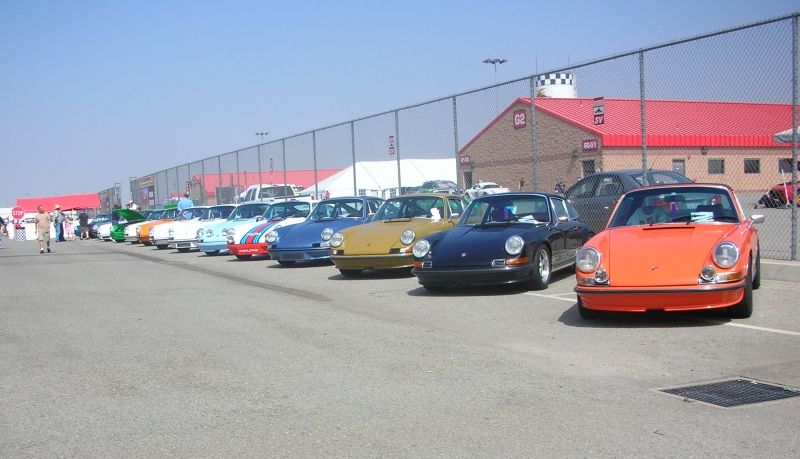
I took it to the Coronado vintage races in 2006 and parked in the Porsche corral and had a great time there.
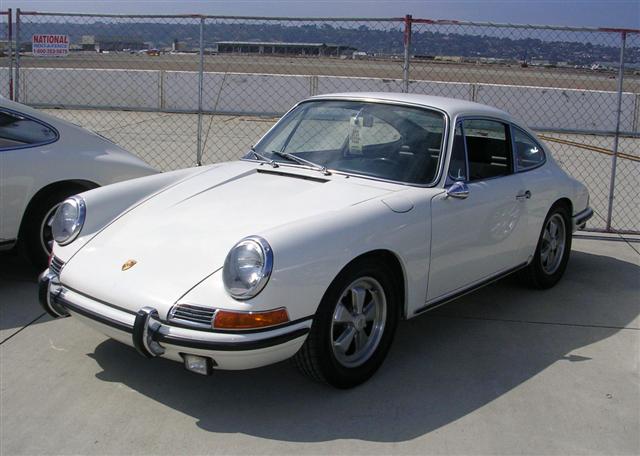
I recently installed new front wheel bearings and new rotors and brake pads, and drove it to the 2007 PCA Parade here in San Diego. I brought it out of retirement for the post-Parade "Grudge Match" autox, which was run on the same course at Qualcomm Stadium the Friday after the Parade, July 6th, and with 205 Toyo RA-1 tires on 7" wheels, I turned a lap within 1/2 second of the winning time in it's class (P06M) at the Parade, run by perrenial class winner Terry Zaccone from GGR, in his '68 911L Targa named "Marcel", who had 225 Hoosier A-compound tires mounted on 6.5" wheels for the event. In all, I have put a total of about 15,000 trouble-free miles on it in my 8 years of ownership, and improved the performance of the car markedly, without destroying its basic originality. The only failure I have ever experienced was a Facet solid state fuel pump which gave out on it in 2005, but I was able to fix that in 30 minutes for about $40.
What it needs to be perfect
In the interests of full disclosure, and to prevent any disappointment for a potential buyer, I want to document every flaw of which I am aware on the car ruthlessly.
The paint, while still glossy, is getting to be 15 years old now and needs touch up, and the engine bay, undercarriage and front trunk areas are all original and unrestored (as in completely untouched for 40 years, except for the front pan repair.) When my brother had it painted, he took it to an Alfa/BMW shop, not a Porsche specialist, and there are some poor aspects to the job they did, as well as some "wear and tear" issues from use over the last years. Luckily, Light Ivory is a very easy color to work with, match and blend, so these issues could be addressed with "touch-ups," as the basic paint coating is still very good, although a complete repaint would obviously be the best option.
About the worst thing the paint shop did during the last job was to omit the rubber cowl-to-fender seals and use seam sealer in this joint. Porsches flex too much in this area to do this, and over the years, the paint on top of the seam sealer has crazed and cracked from this flexing. I guess the good thing is that no water has gotten in there, but the car has never been driven much in wet conditions since it was painted anyway. I have talked to my friends in the autobody business, and they say the best solution is to loosen the fender fasteners enough to pull this joint apart, remove the seam sealer, touch up the paint, and reinstall the rubber bead that should be there.
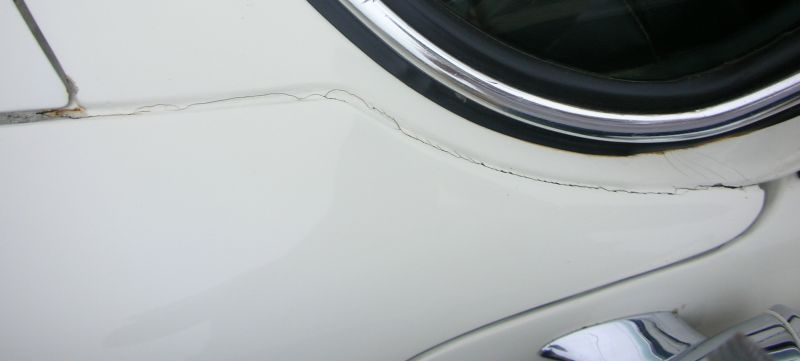
The shop did not remove the doors to paint them, and did not strip the jambs. This is not worth correcting at this point, I don't think, but there is paint sprayed on the hinge pins, door stop and overhead light switch in that area that bothers me. Also, the rubber cover for the plunge switch is missing on the driver's side, and the paint code plate is worn. New blank plates are available from Stoddard for $9, as well as the special drive rivets to install it, but I haven't found the proper punch set to reproduce the stampings yet. I have heard that International Mercantile can do this for you.
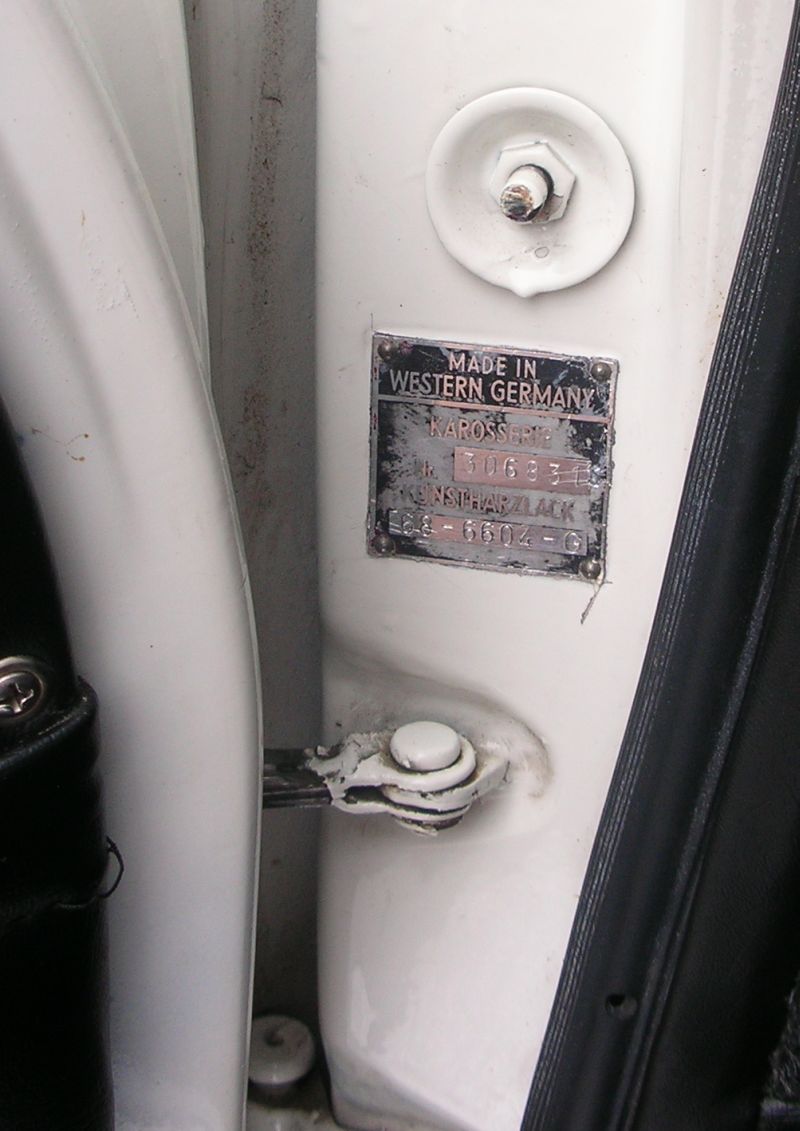
There are a few small chips on the door edges, front valence, hood and roof that should be touched up. Pretty minor, but flaws, nonetheless.
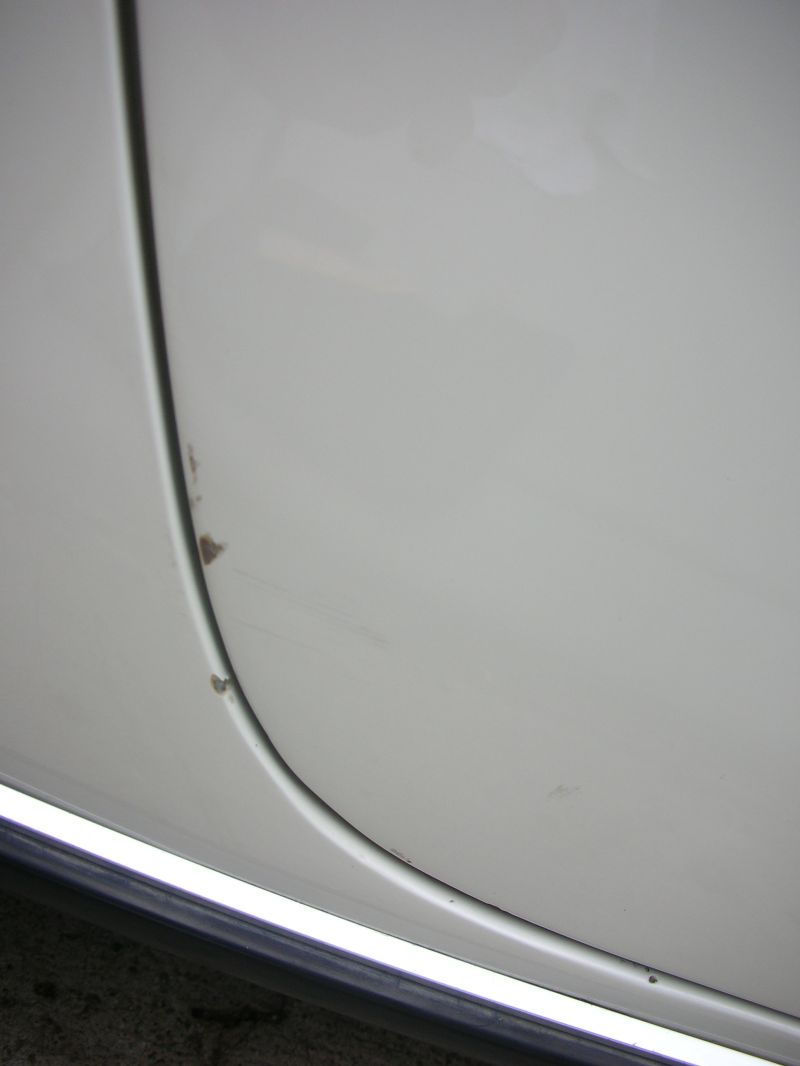
There has been some "sandblasting" from road grit on the trailing edge of the rockers and fender lips at each wheel, and there is one spot on the passenger side front fender, behind the wheel at the bottom, where the paint has cracked and let enough moisture in to start some rust and lift the paint. This is about a 50-cent-piece sized spot that needs to be ground down, metalworked as necessary, prepped, and repainted, and the rockers should probably be refinished at the same time.

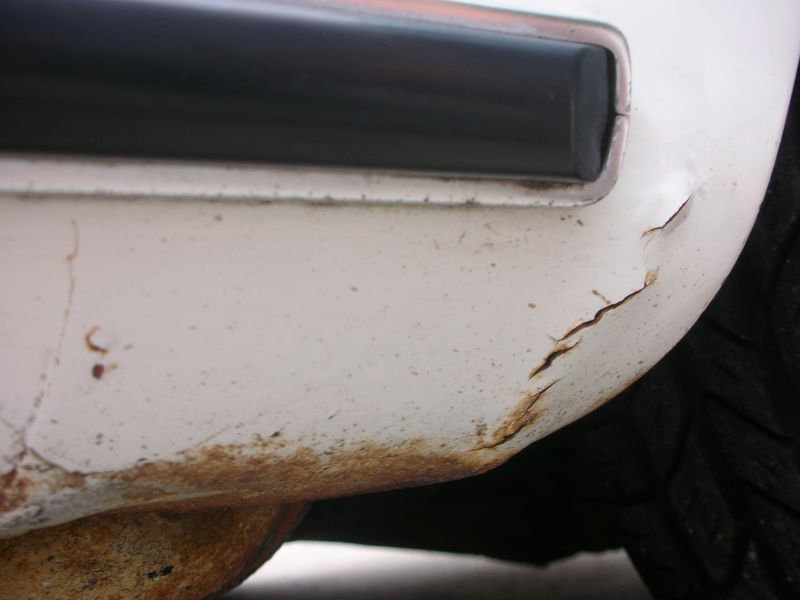
I have noticed a couple of fractures in the paint coating on the license plate panel too, probably from the heat of the muffler, about the size of a quarter, that have not flaked off or shown any rust yet, but should be fixed. They are invisible from 10 feet away.
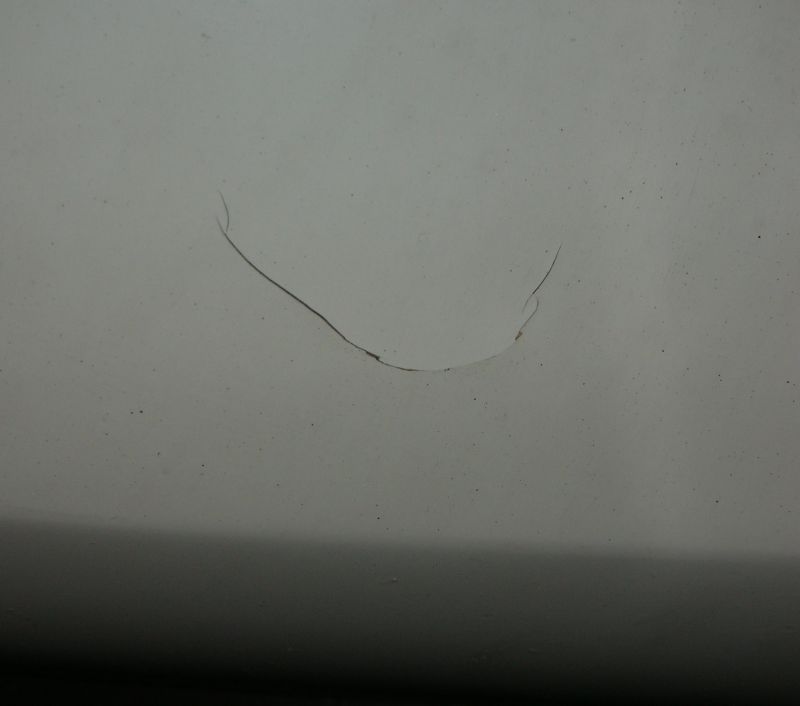
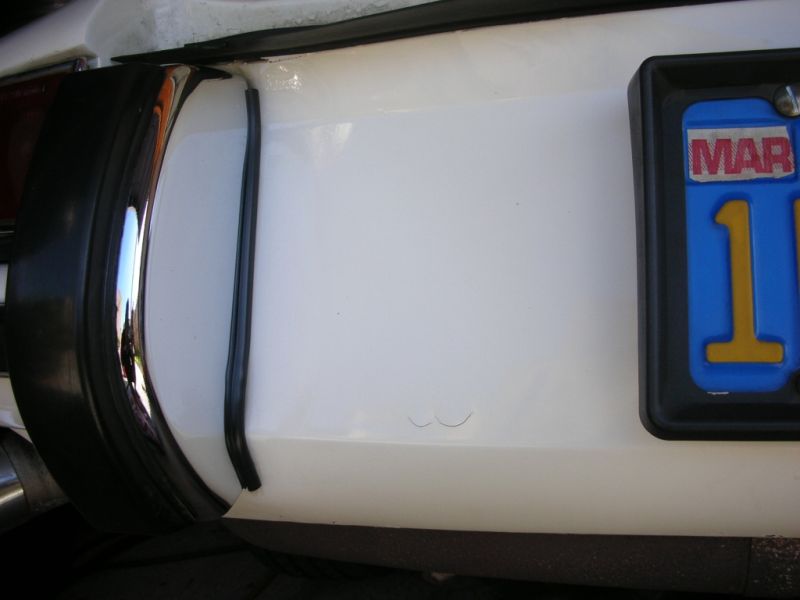
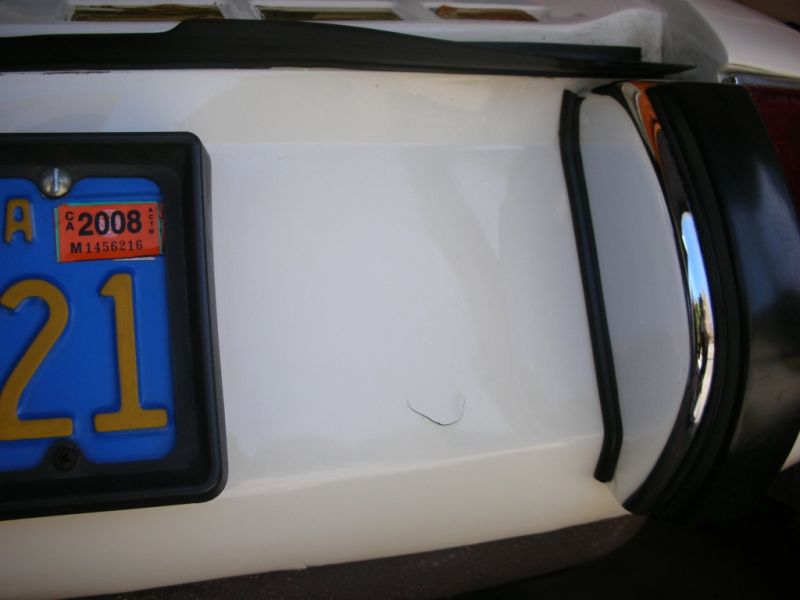
The rear bumper caps were painted over by the shop, and I believe they were originally bright, polished metal. I would have them stripped and polished when doing the other paintwork.

The engine compartment surround was not stripped nor the stickers removed in the last paint job, which might be a good thing, as the original stickers with the red outlines are NLA, but some of the existing ones have corners torn and missing. The current replacements from the factory have a black outline. I have obtained a set of new reproduction ones produced by http://www.carclassic.biz/ with the proper red outline, and they are included for whenever the next bare-metal paint job is done. The rear latch was not removed for painting either, but was simply painted over, including the bolt heads. These items should be stripped and re-installed.
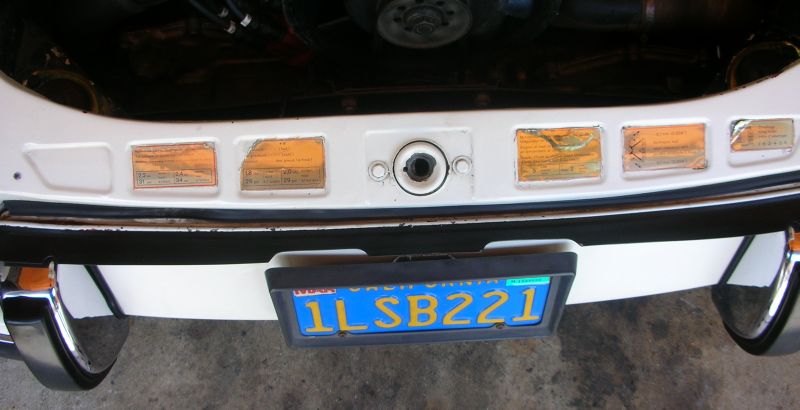
The engine and engine compartment is definitely in need of a complete cleaning and restoration. It is all completely original, except for the addition of an MSD ignition and a solid state electric fuel pump. To be perfect, the engine would have to be pulled and cleaned, the red shroud refinished (it is quite dirty and a bit faded, but some elbow grease and shoe polish could fix it), the sheetmetal and air cleaner painted or powdercoated, the fan polished and replated, the sound pad re-glued where it has fallen away from the upper panel, and the compartment cleaned and recoated. The small oil leaks could be fixed at this time as well.
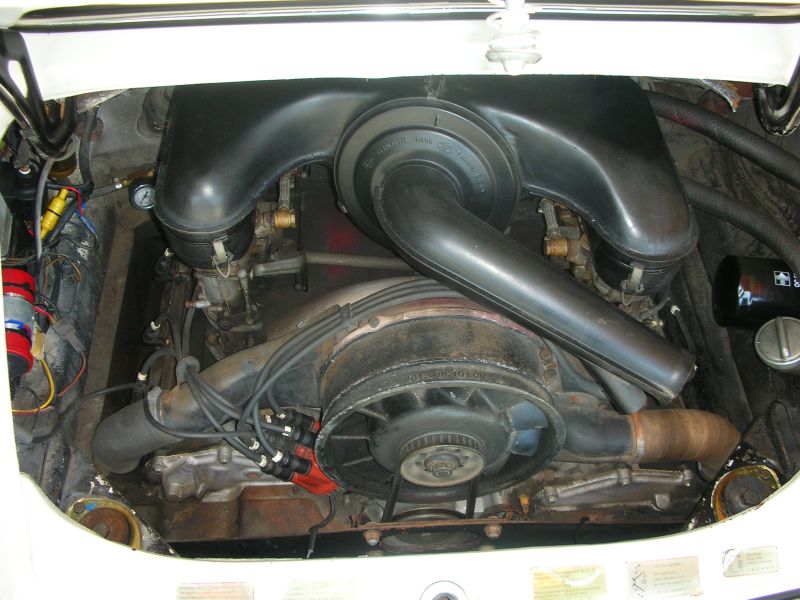
I recently installed a Facet interuptor type fuel pump that is very similar to the original Bendix pump, and used a repro sticker on it to fool the eye. Not original, but closer to it than the solid state pump in the picture above.

The original orange heating/defogging ducts for the rear window are still intact, as you can see in the picture above, although they were known sources of condensation that Porsche quickly eliminated and replaced with electric elements in the rear window glass in later models. The tub in this area is a double-walled envelope, and condensation was constantly trapped in this cavity causing corrosion. When the inevitable rust repairs were made to the sheetmetal at the corners of the rear window during the last paint job on this car, the inner panel above the engine was left open, so that hot air from the engine compartment could circulate and evaporate any moisture. The rust has never recurred in this area since then.
Underside of the engine:
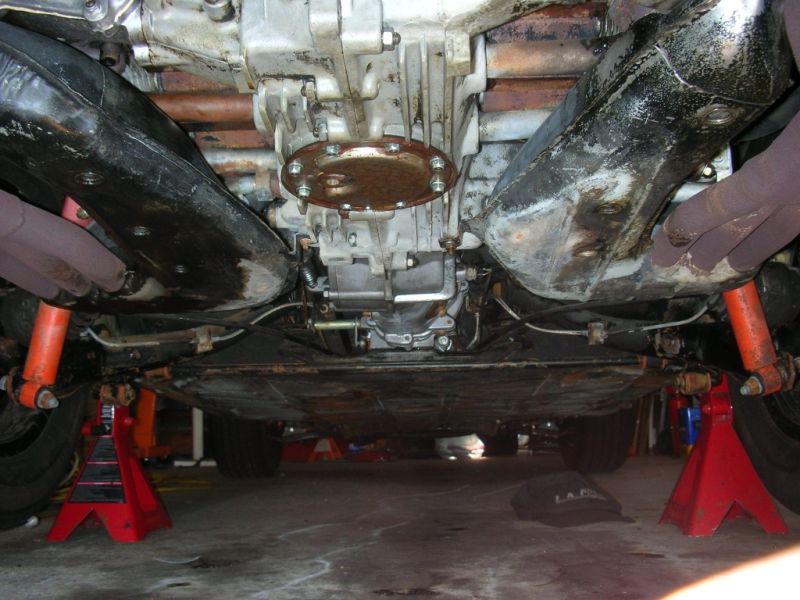
The undercoating has chipped and flaked off in many places under the car, and there is some white overspray at the outer edges of the rockers from the previous paint job. I have had the whole underpan steam-cleaned, and planned to wire-brush the surface rust off, and recoat the bare metal with POR-15 and undercoating. I have crawled all around under the car and inspected it, and the metal is perfectly sound everywhere--there are no perforations, just surface rust that needs to be treated with the POR-15 coating solutions, which have worked very well for me in the past. I have done this same process with my '73E and it has held up well for 7 years, now. Here's a pic of one of the worst places on the underpan: Rather than complete this work and have people wonder what is under the new undercoating, I think it is best to leave it open for inspection at this time, if I am going to sell it.
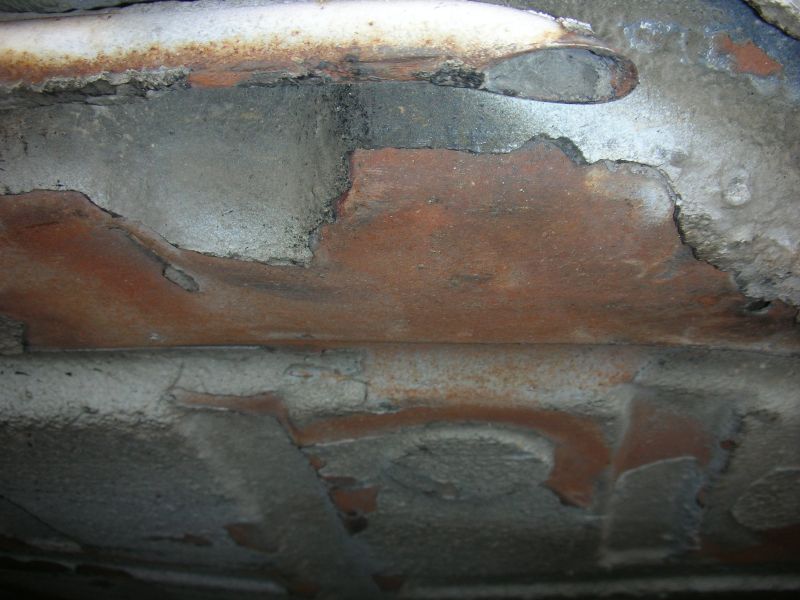
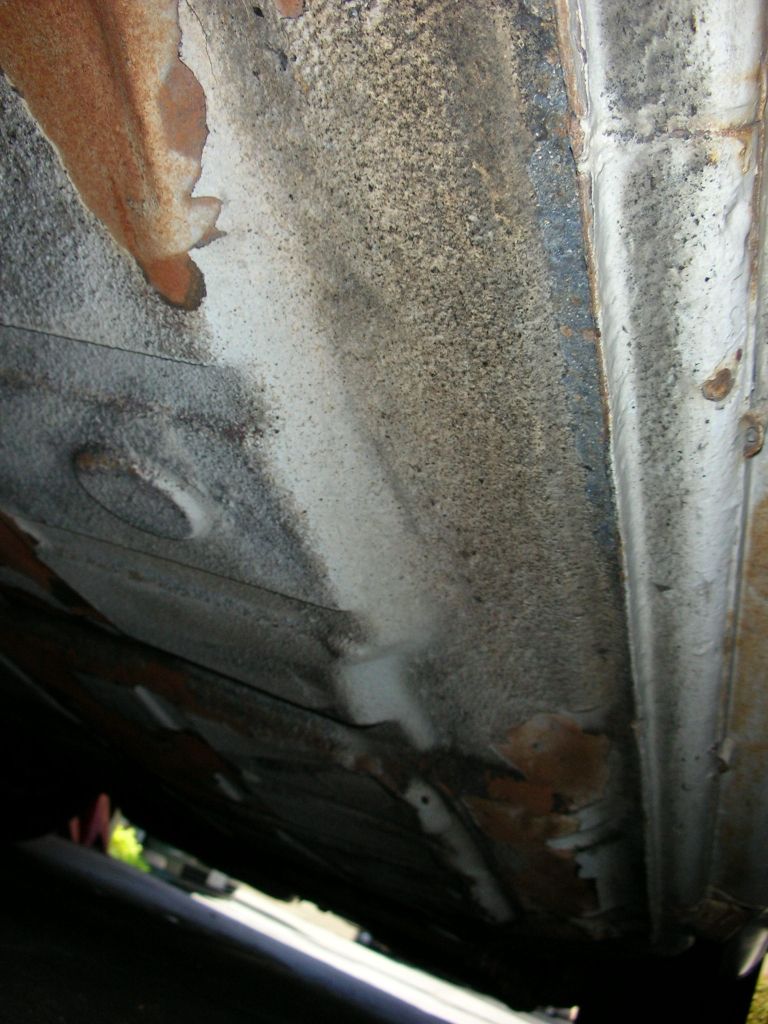
The muffler for the Webasto heater has rusted completely out, and I have purchased a replacement unit from Damon at Series 900 on the east coast. I have never used the heater anyway in So. Cal., so it hasn't been on top of my list to replace it, but the Webasto heater still functions, and it is a simple matter to replace the muffler and piping. If I don't do this job before selling the car, the replacement parts will be included.
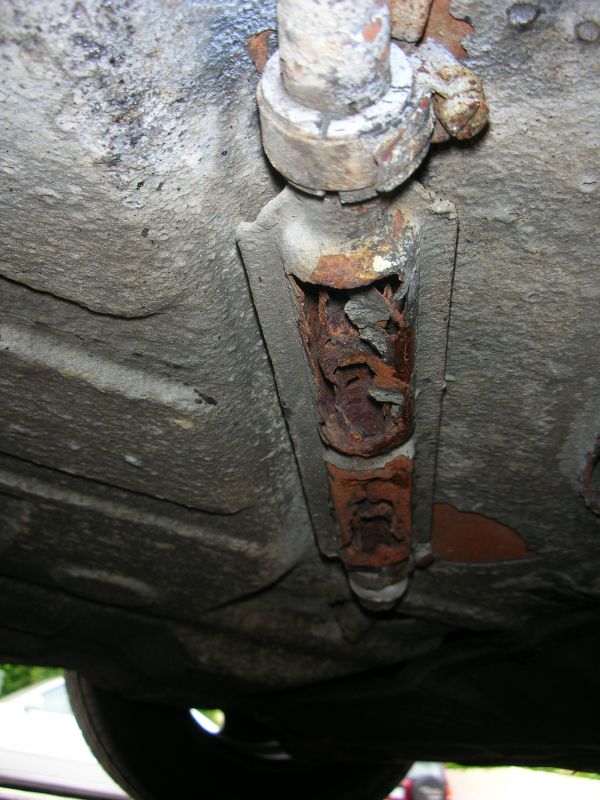
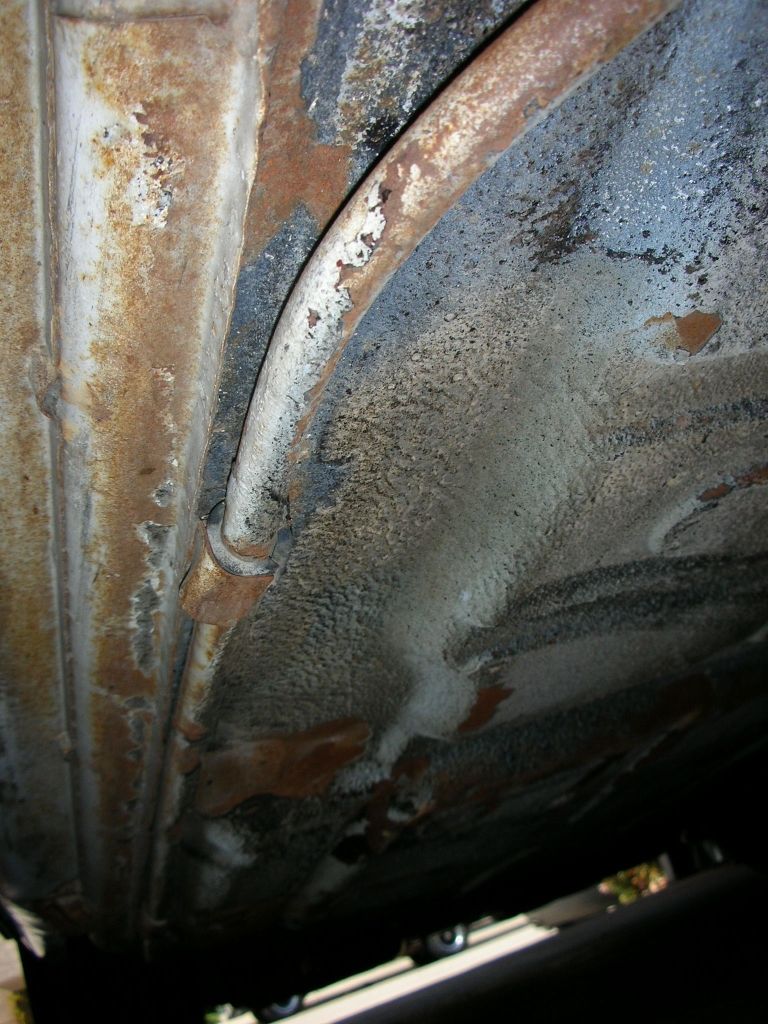
Here is the replacement unit:
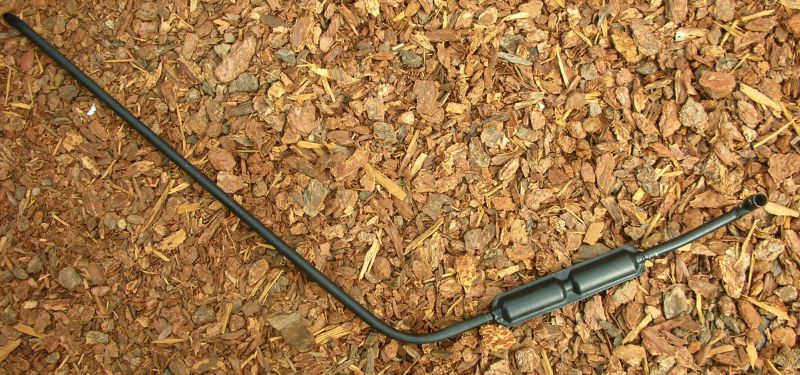
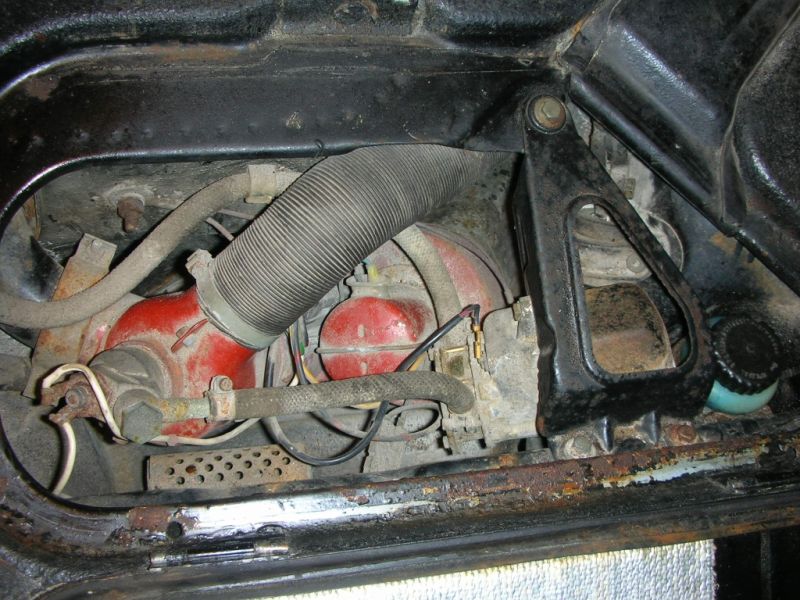
The front trunk has some chipping and flaking of the undercoating as well. I discovered a leak in the gas tank level sensor gasket which I fixed with a new cork gasket, but it had been leaking for some time when I got the car, and gasoline had lifted the coating on the tank there. The whole compartment needs to be cleaned and degreased, the surface rust wire-brushed and treated with POR-15, and new body schutz shot in the flaked areas.
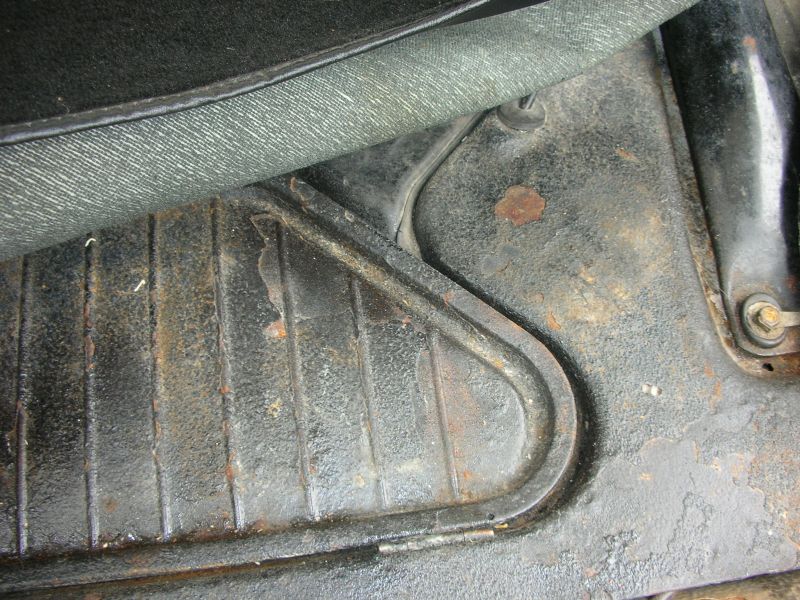
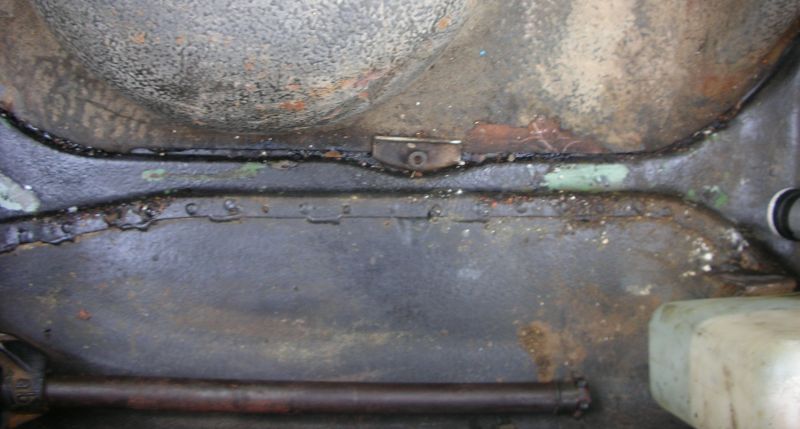
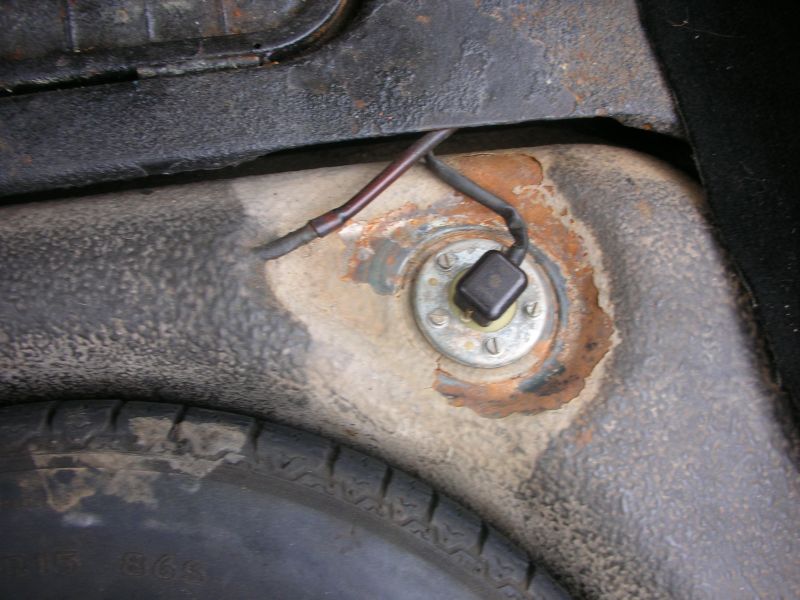
The front pan is solid:
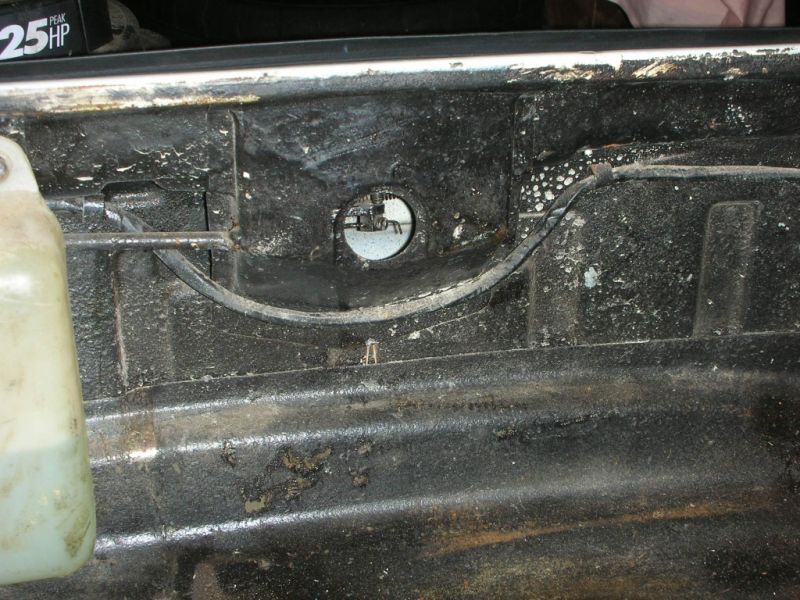
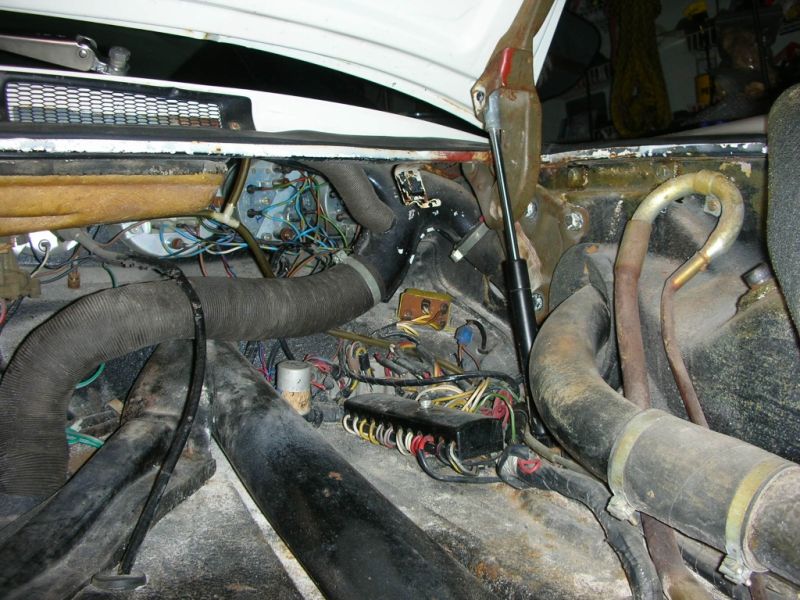
For some reason, the trunk carpet was replaced in a black material instead of the original grey felt. It's still in good shape, just not correct, I don't believe, and hasn't bothered me enough to do anything about it yet.
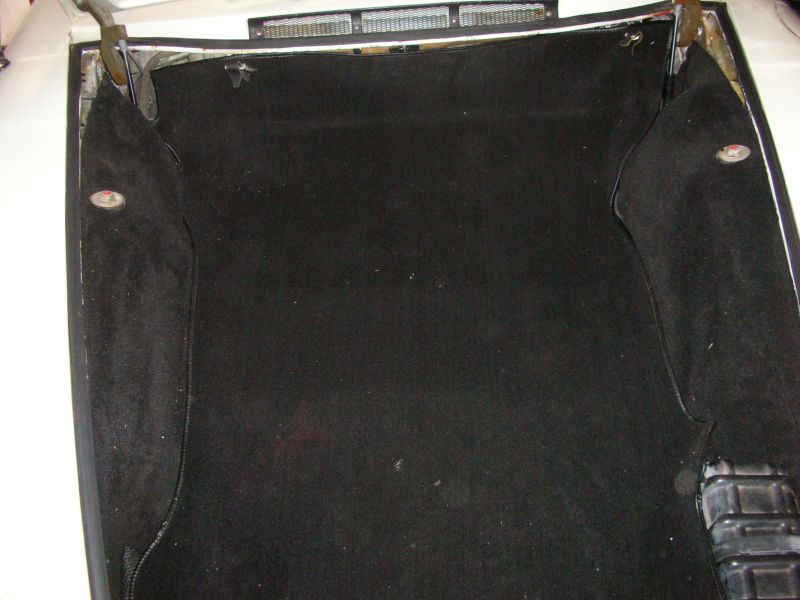
Most of the chrome and aluminum trim is in great shape, but the horn grilles and door handles are showing a little pitting, so I will probably have them replated at some point.
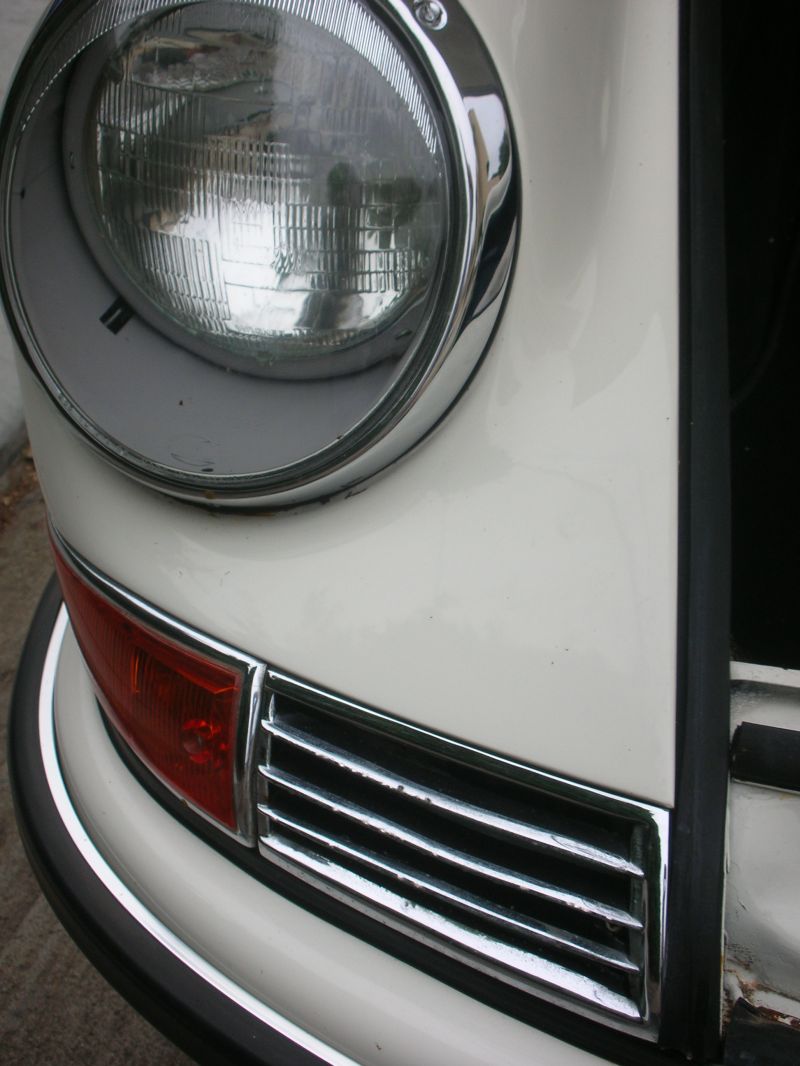
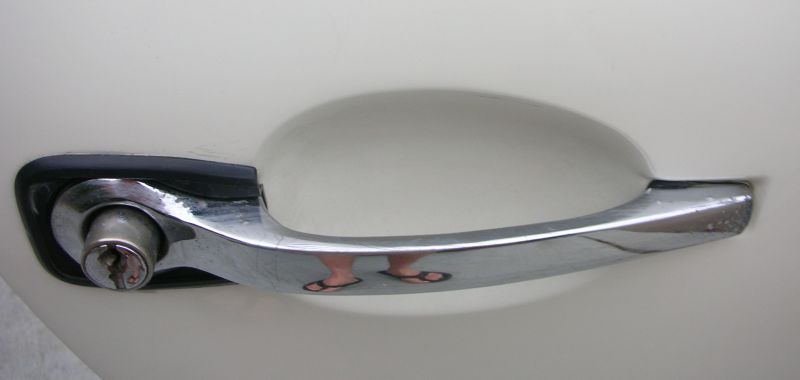
The rubber moldings used around the handle base are not correct, either, they are rectangular instead of round. I have a set of the round ones that I was going to install the next time I have the door panels off.
I believe my brother replaced the hood crest as well, as it seems to be the later red one rather than the orange of the original crest.
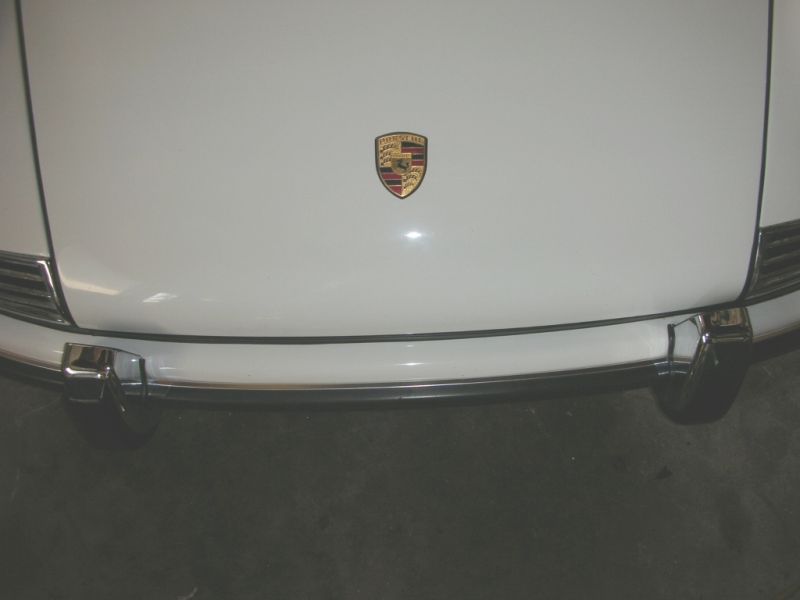
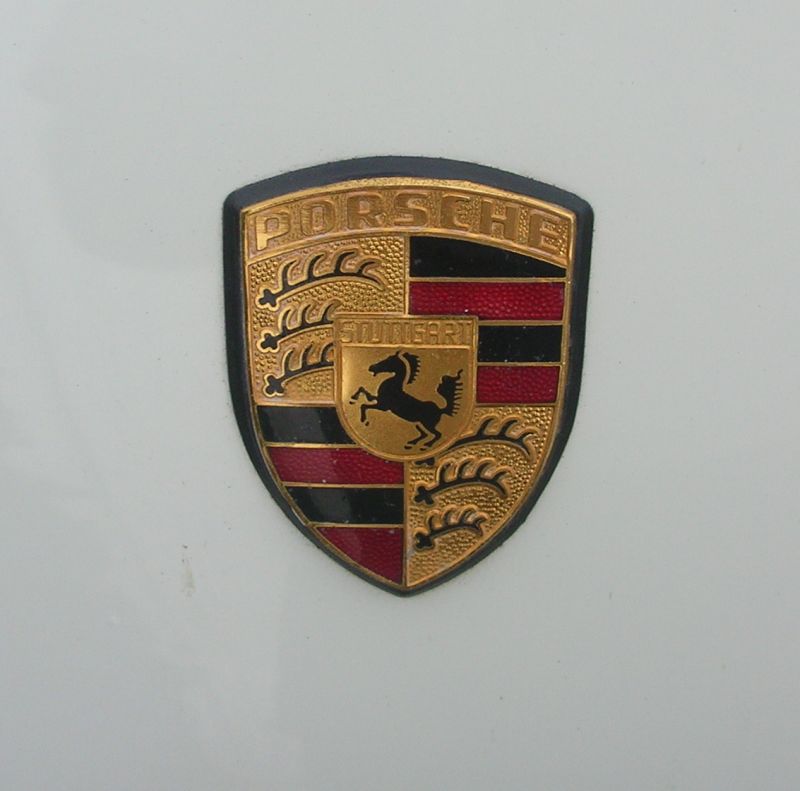
When the hood was last stripped, the undercoating was removed from the inner side, and the interior trunk light was not re-installed. I have the light and wiring for it, including the hinge-mounted pressure switch, which can be installed the next time the hood is off the car.
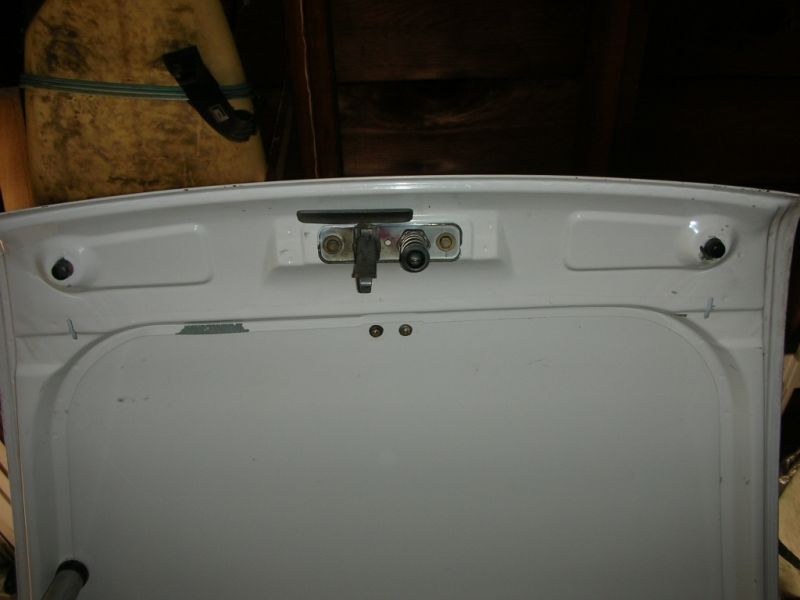
When doing the paint work, I was going to have this correct '67 decklid and grille that I bought and had stripped to bare metal painted and installed as well, to replace the '69-71 lid and grille on the car, just to return it to a more period-correct look. These bits will be included. I actually have 2 of the early grilles, and one of them is in nearly perfect condition.
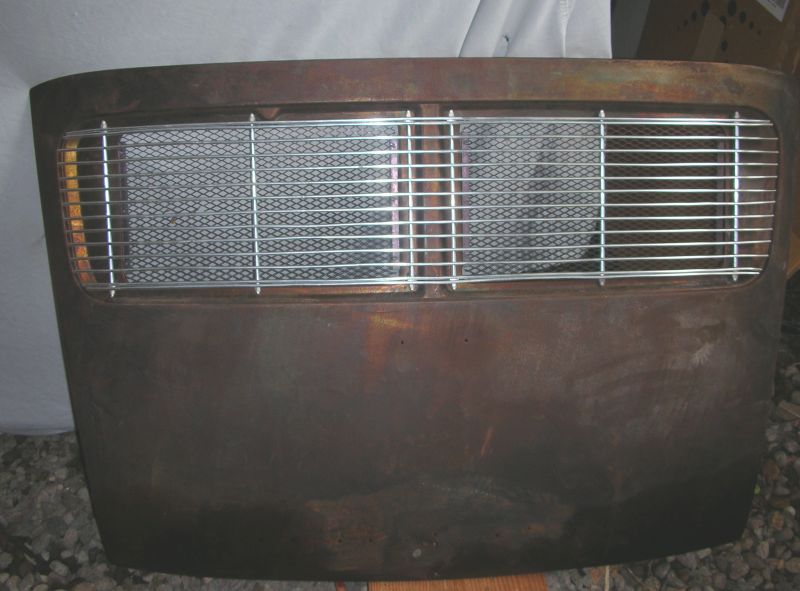
The original Talbot mirror is still in pretty nice shape.
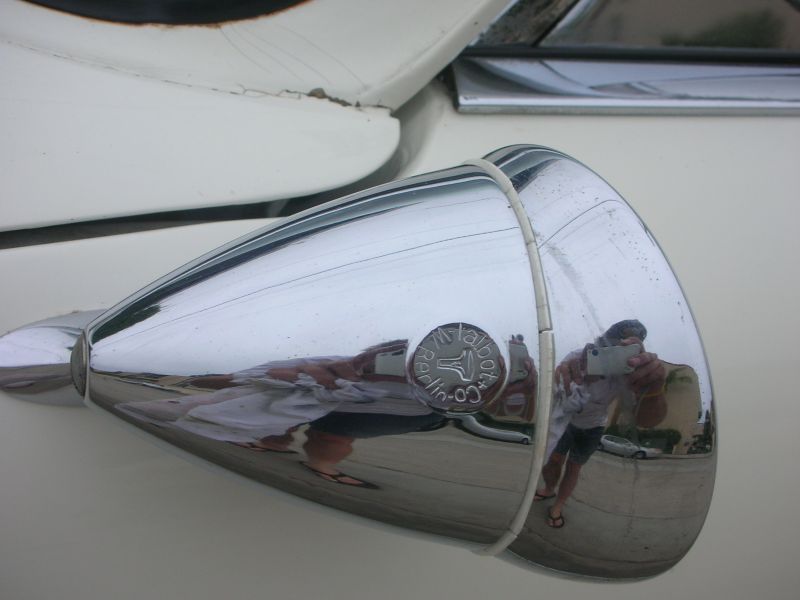
That's about it for the exterior details.
The interior is still in pretty nice shape except for the dashboard. My brother had the upholstery shop repaint it, but they did a crappy job of prep or something, because he said the paint start rubbing off the first time he cleaned it. There are some scuffed places that should be refinished (the worst is to the left of and below the temp gauge), and there are still two extraneous items left there from the alarm install--a small pushbutton switch and a warning light (to the left and right below the tach.) There is a little pitting of the chrome on the instrument bezels after all these years, but they are still fairly good. The clock does not work but the rest of the gauges and lights are fine. The gas gauge gets a little flakey and hops around sometimes, reading lower than the actually level briefly and then bouncing back up, but the reserve light still functions properly, so there is no chance of running out of fuel accidentally. My brother installed an aftermarket Dino wheel when the original was stolen, and I really like the size and feel of it, so I have never installed the used '67 wood wheel I bought a few years ago. The Dino wheel is just so much better for driving, in my opinion. It is smaller than the original by a bunch (the stock wheel feels like you are driving a bus or something, it is so big) but still big enough not to obstruct the gauges too badly like some of the small diameter race wheels.
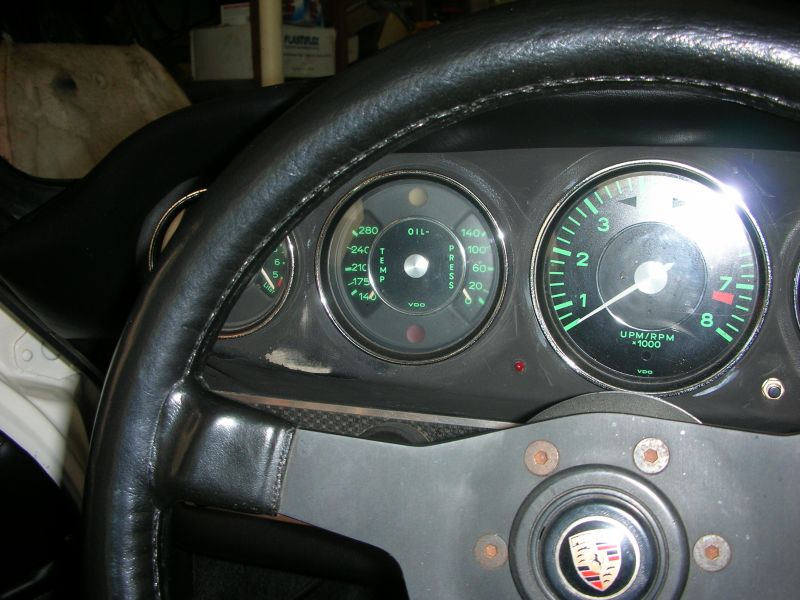
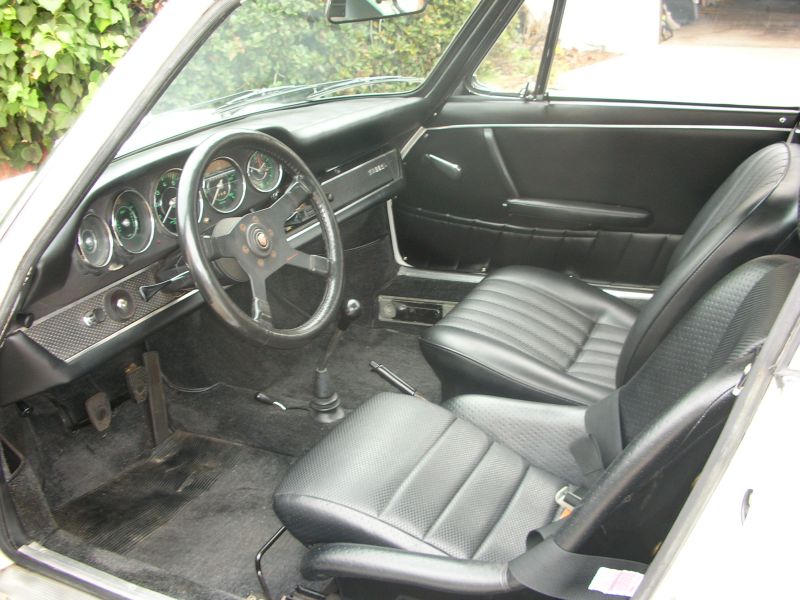
The seats and carpet and headliner are still in very good shape, except for a couple of cracks in the rubber heel pad by the gas pedal. The driver's side sport seat in this pic is one of Peter Z.'s Vintage RS seats with headrest, but I have reinstalled the original driver's-side seat before offering the car for sale, along with the stock seat belts, as the bucket seat is going to be used in my '68 911R-look project. This is what the cockpit looks like currently:
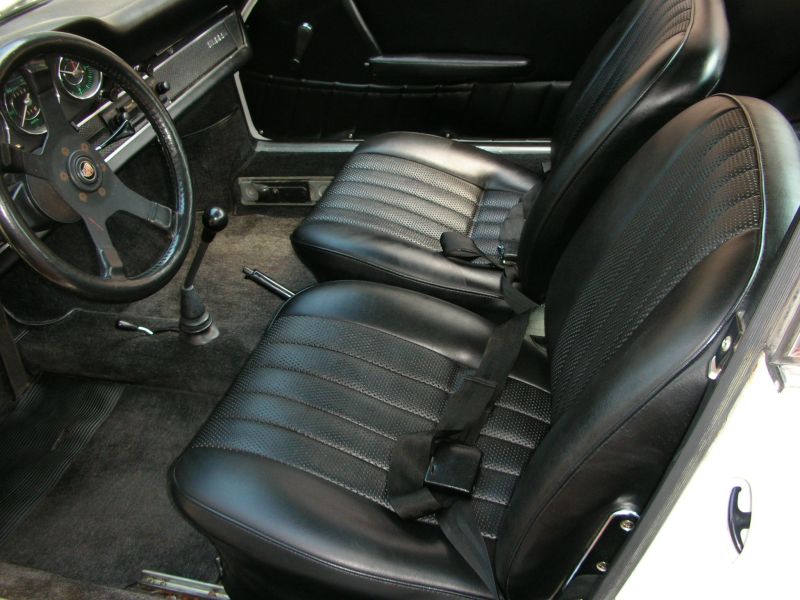
A closeup of the splits in the rubber mat (I have actually vacuumed the car since then):
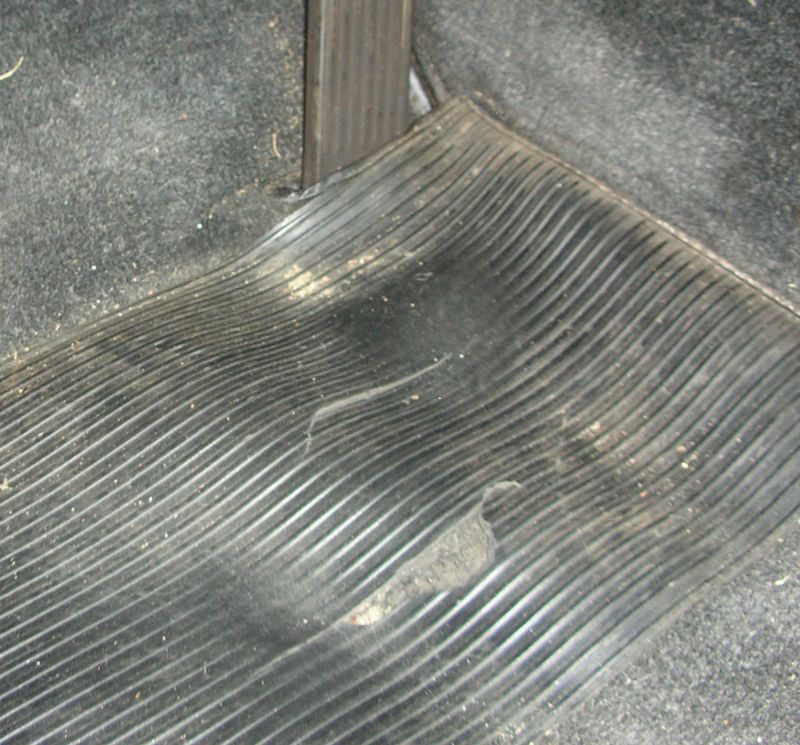
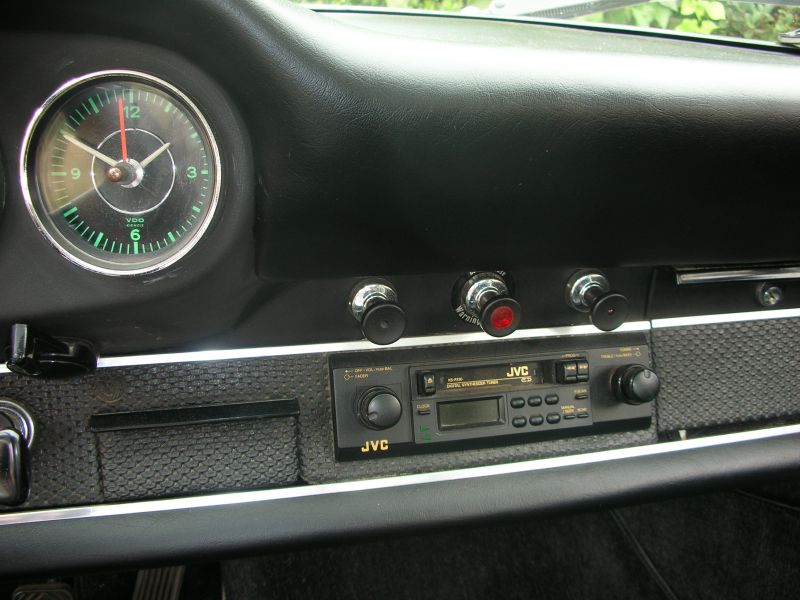
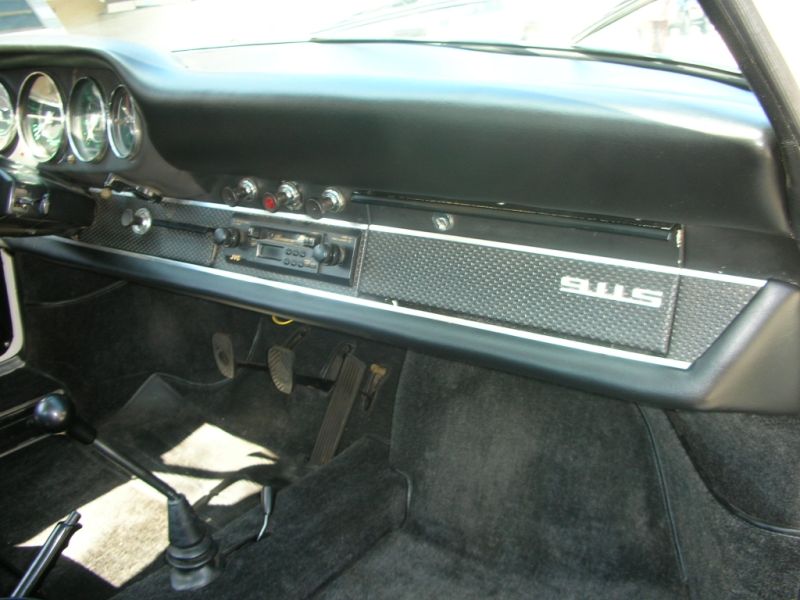
The interior was completely redone in original OEM materials, but the speakers were rear mounted, and the original single dash speaker covered over when the upper dash was renewed. I have considered changing the radio back to "period correct originality", but I rarely use it anyway, preferring the engine noise to accompany my driving, so it hasn't been a priority. I have a complete, original rear shelf trim piece without perforations for the speakers that will be included.

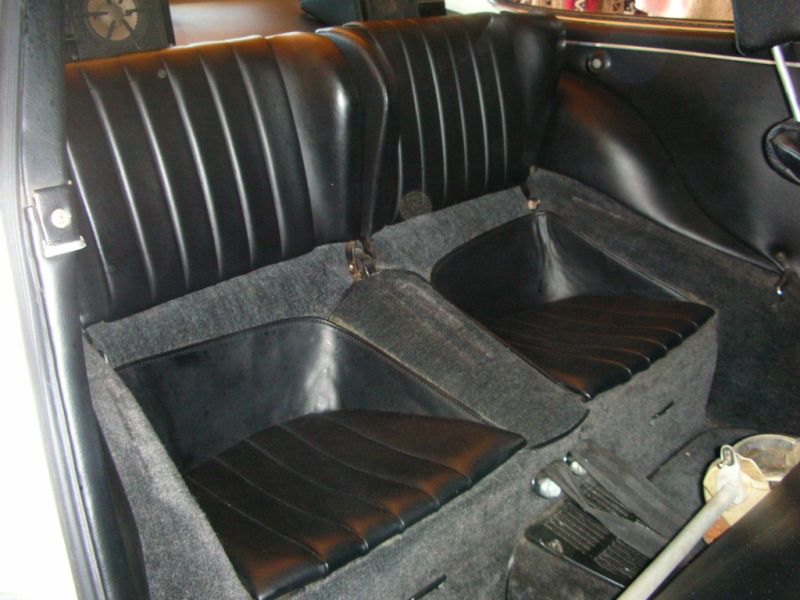
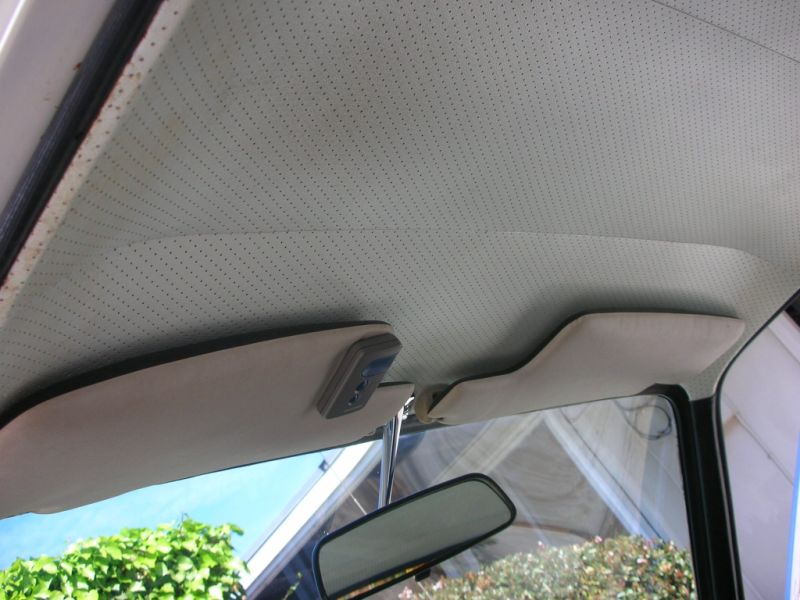
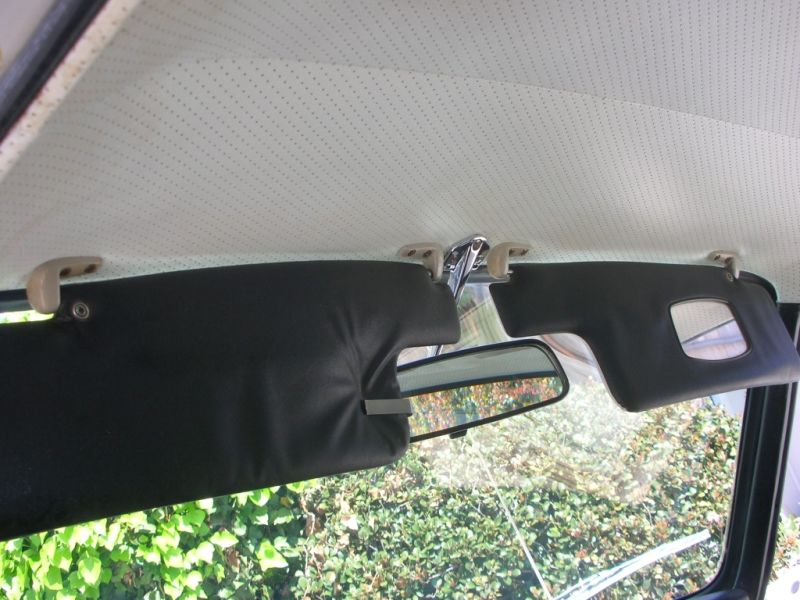
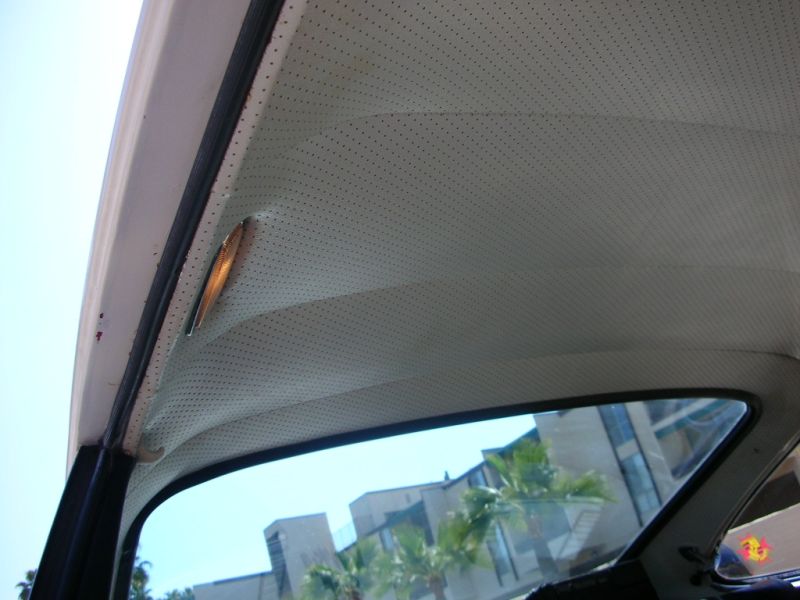
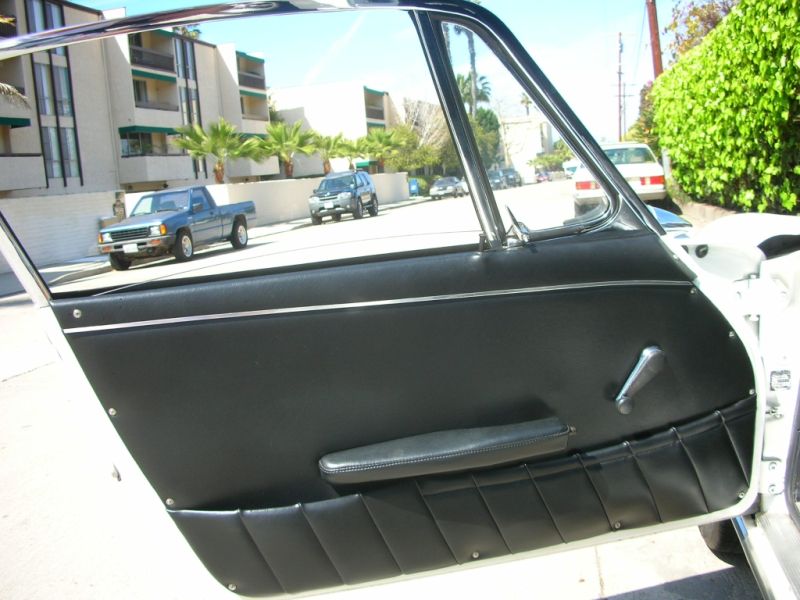
One final detail of the interior that I haven't been able to
correct is that one of the chrome trim rings that go around the
door pushbutton on the handle was lost when my brother had the
interior redone. The shop simply trimmed the end of the handles
in leatherette and I have one of the rings loose, without a mate. Eric Linden is now producing duplicates of these parts at Auto-Foreign Services.
